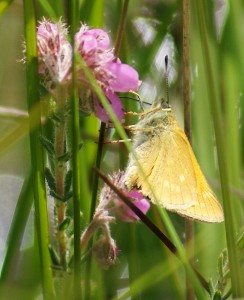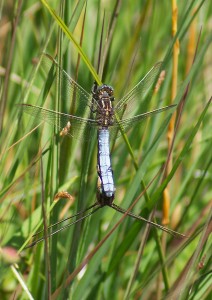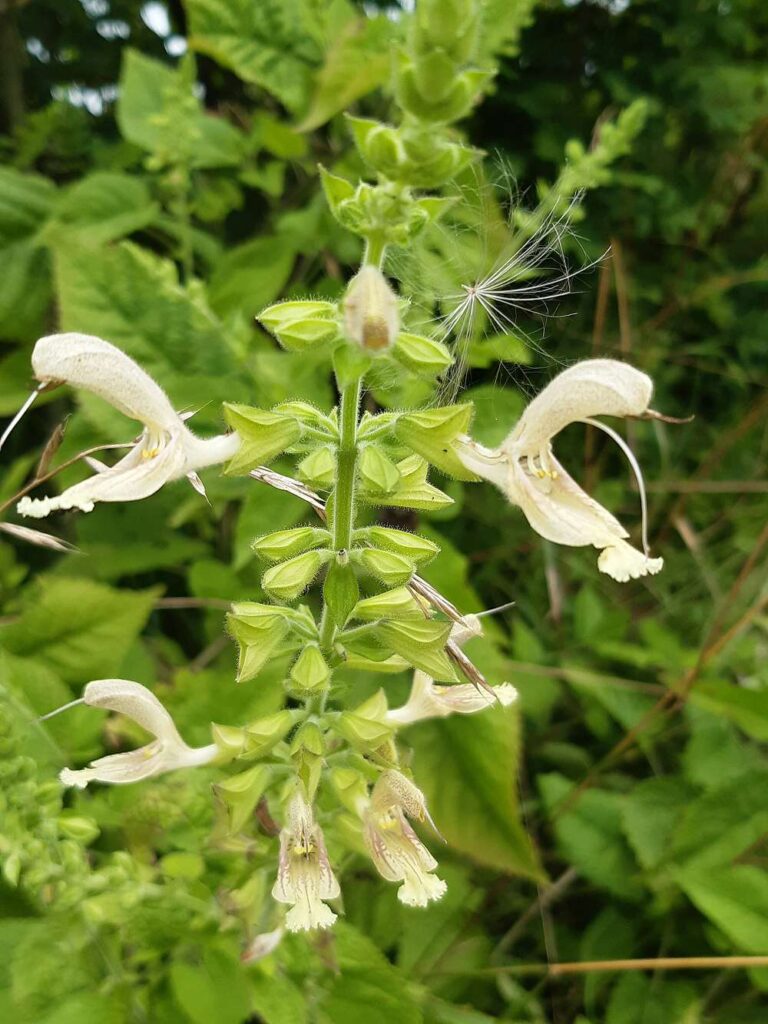
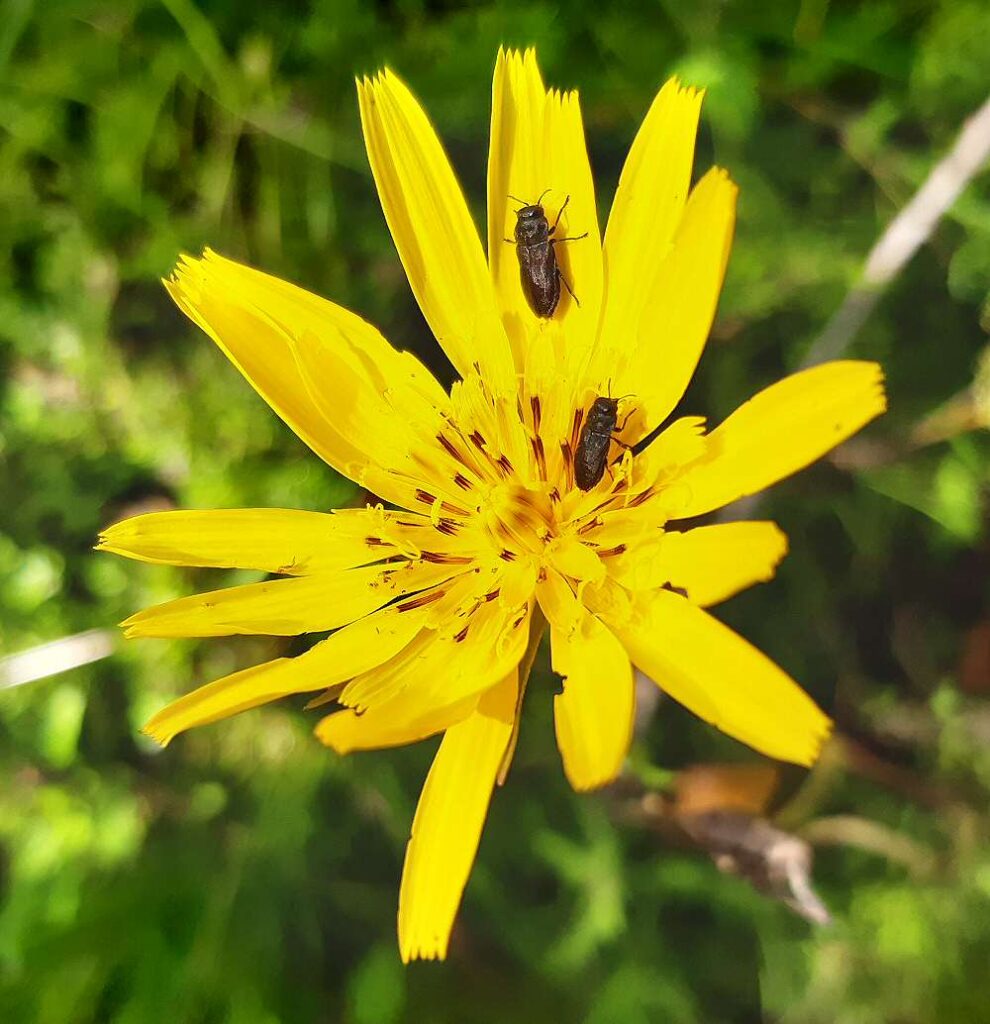
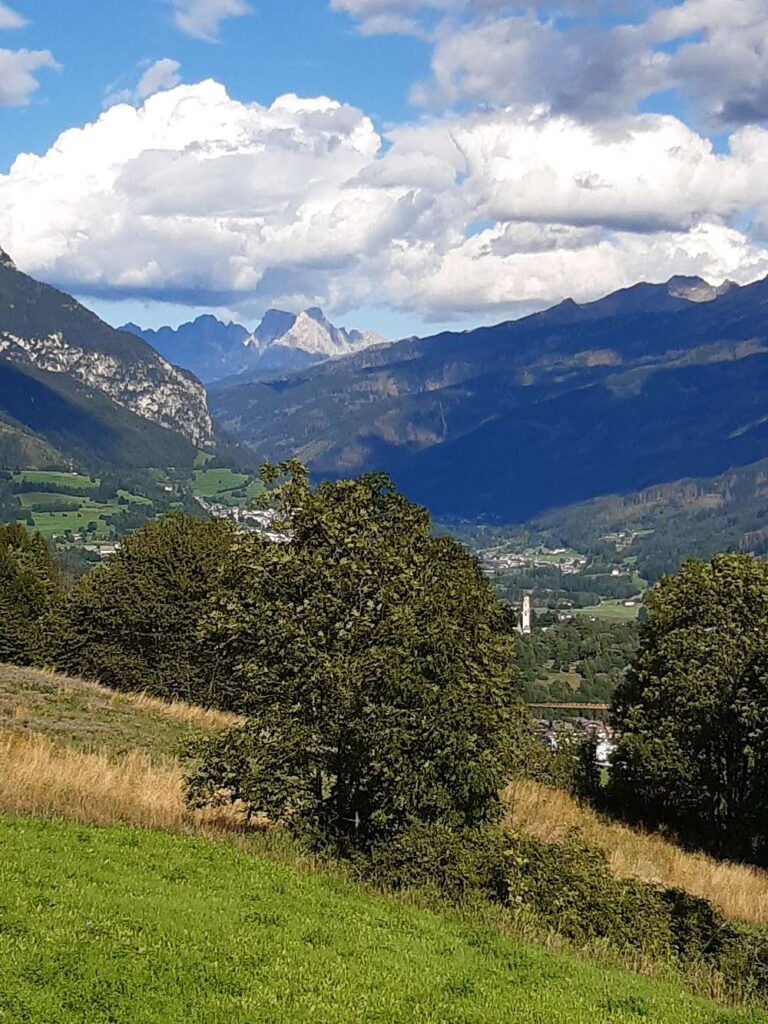
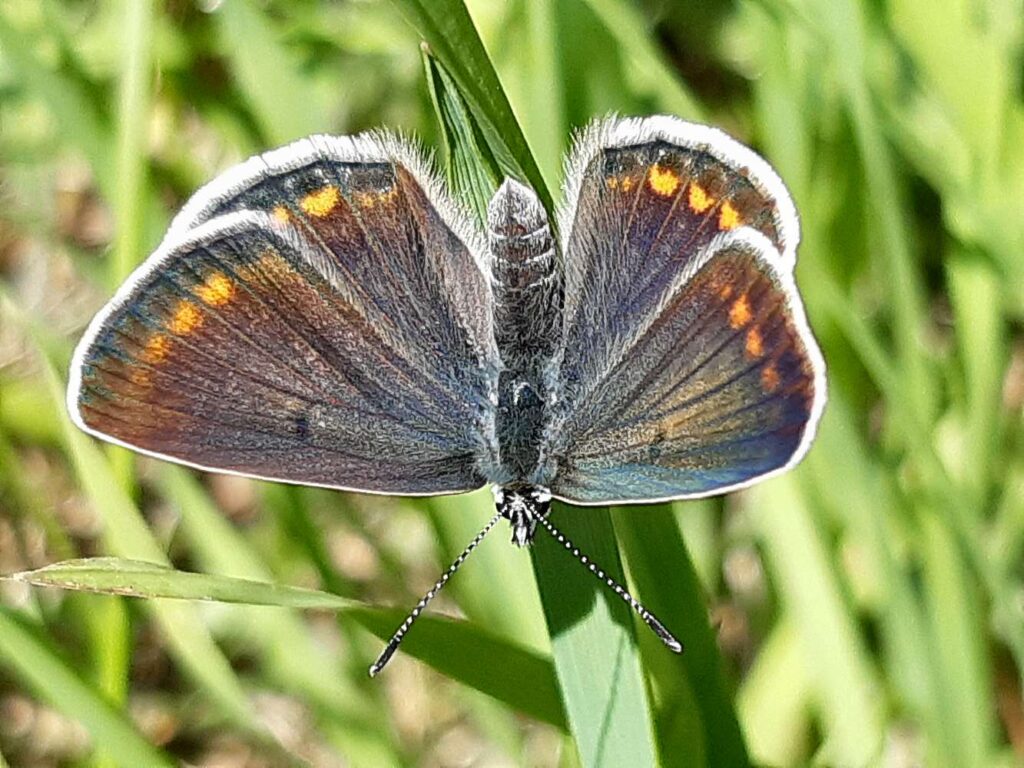
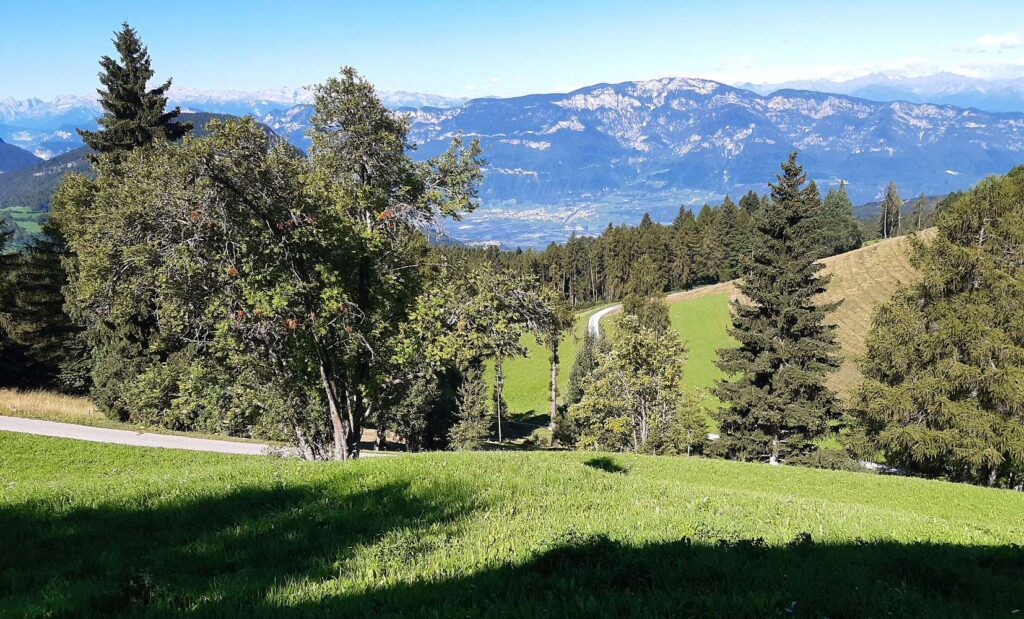
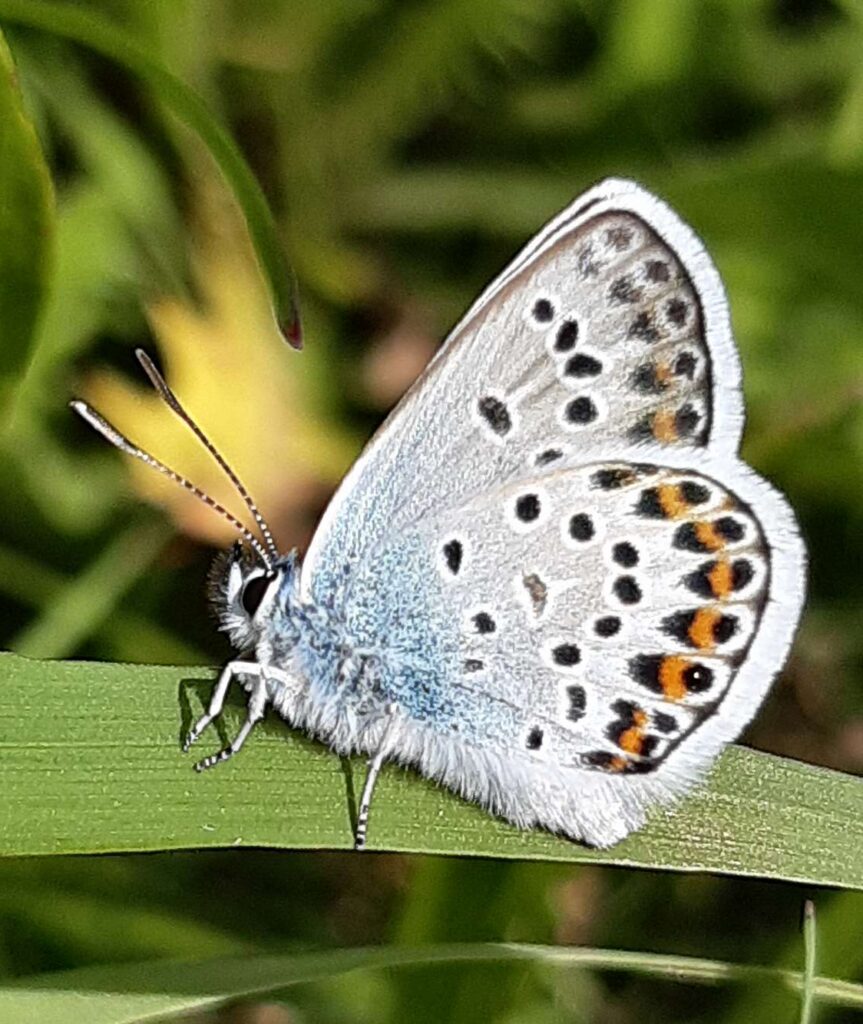
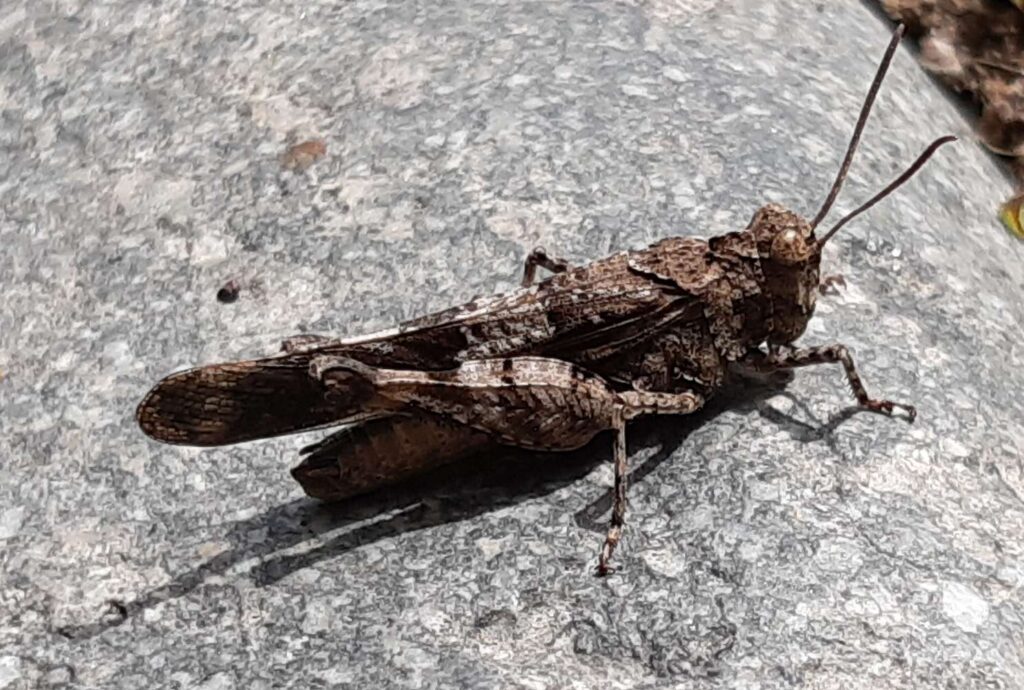
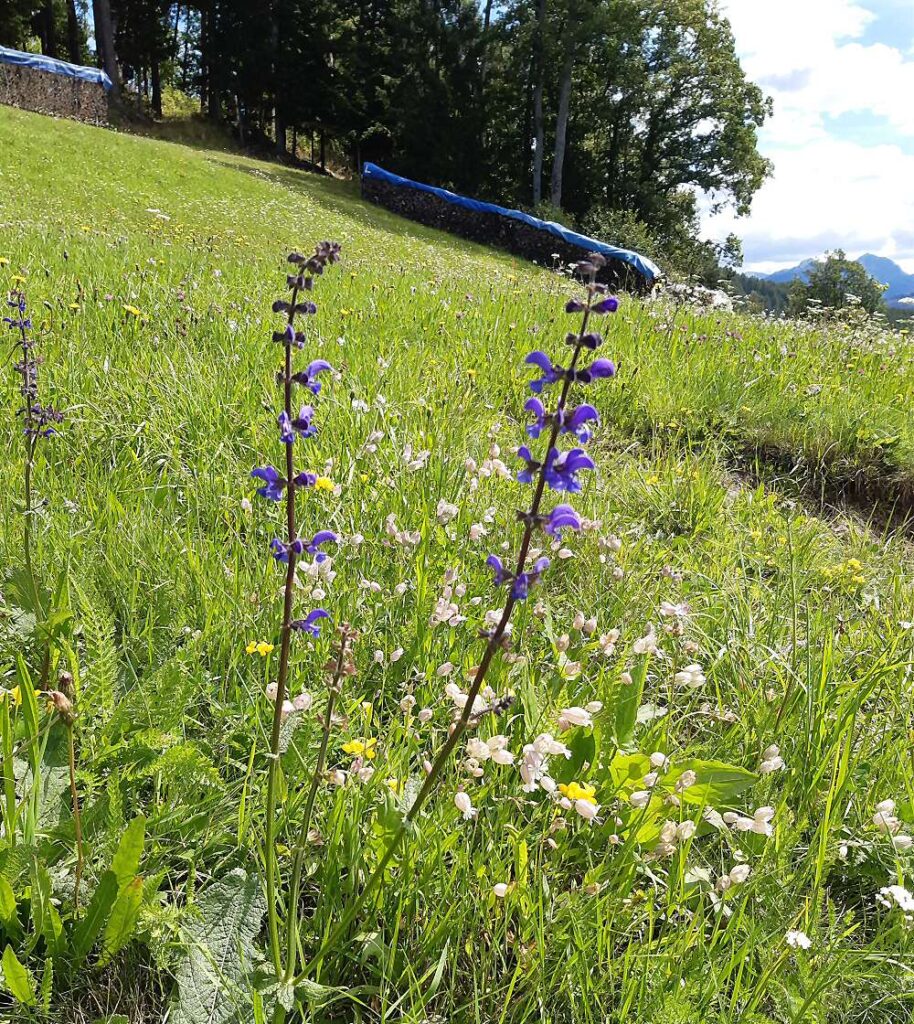

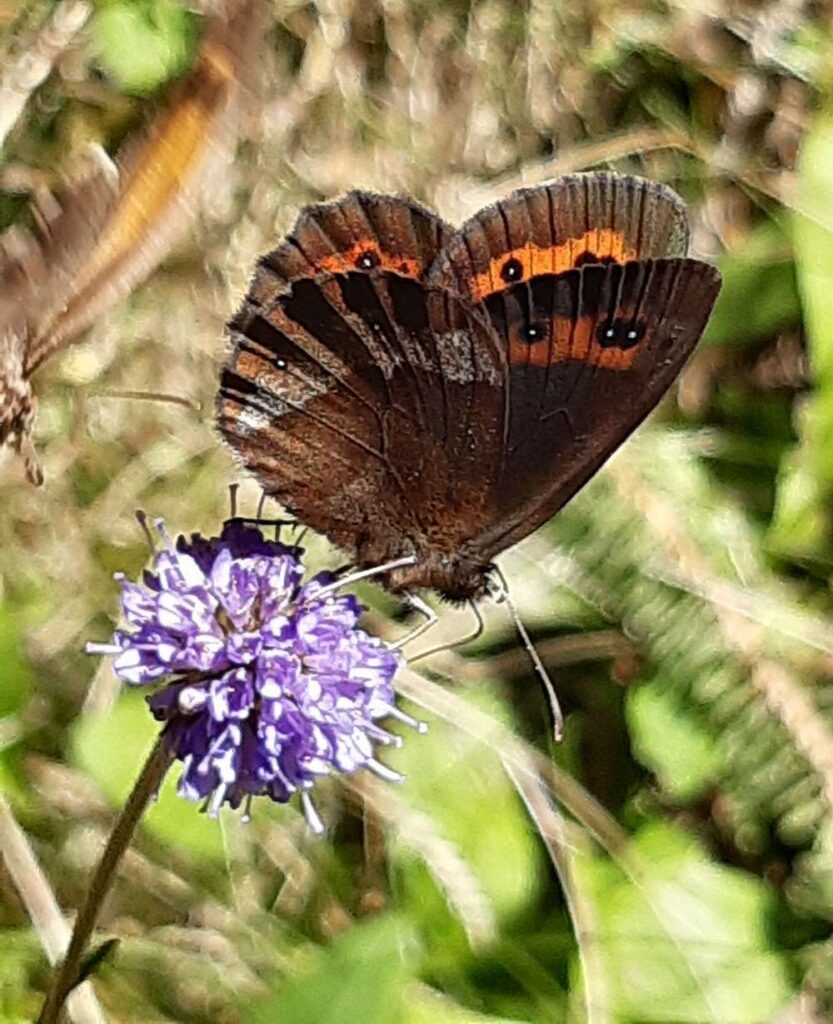
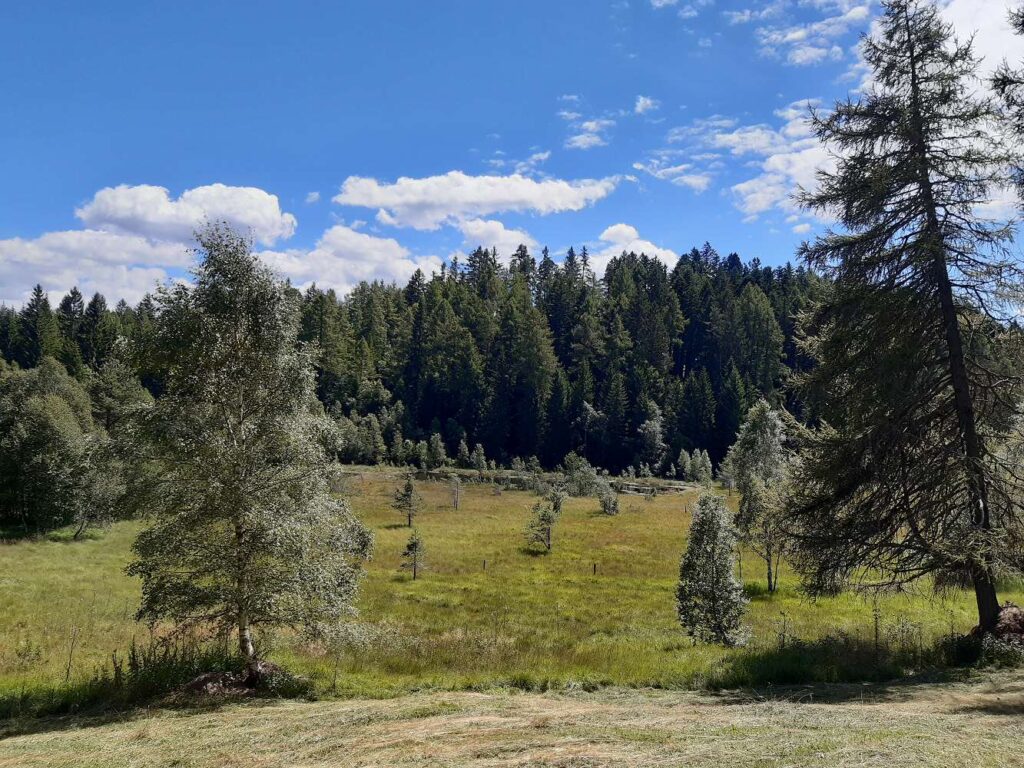
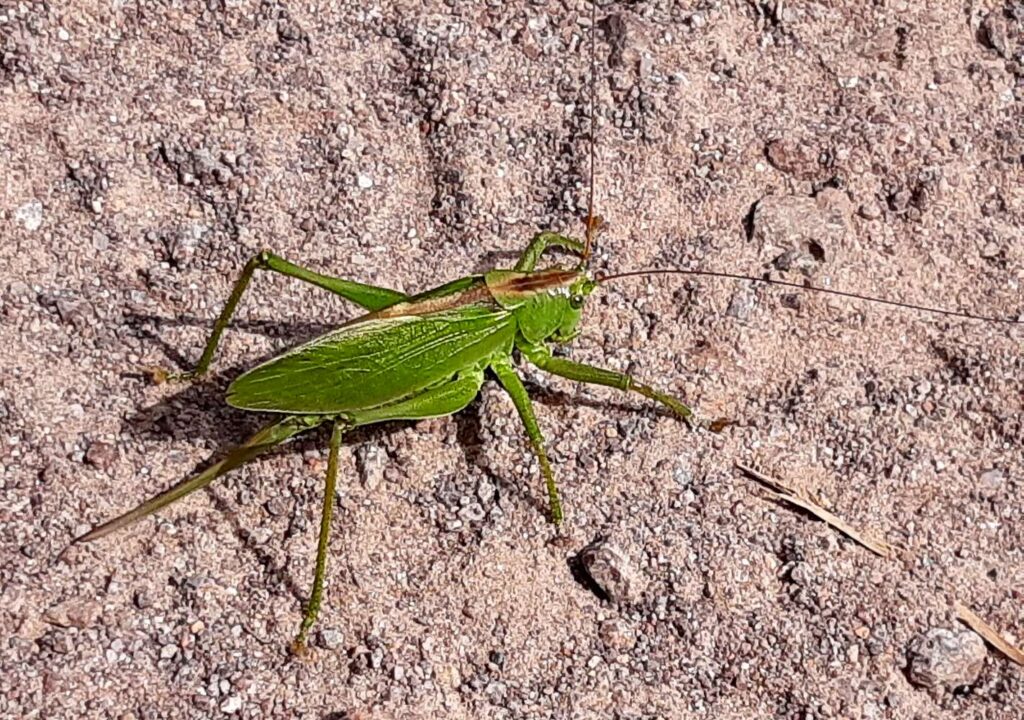
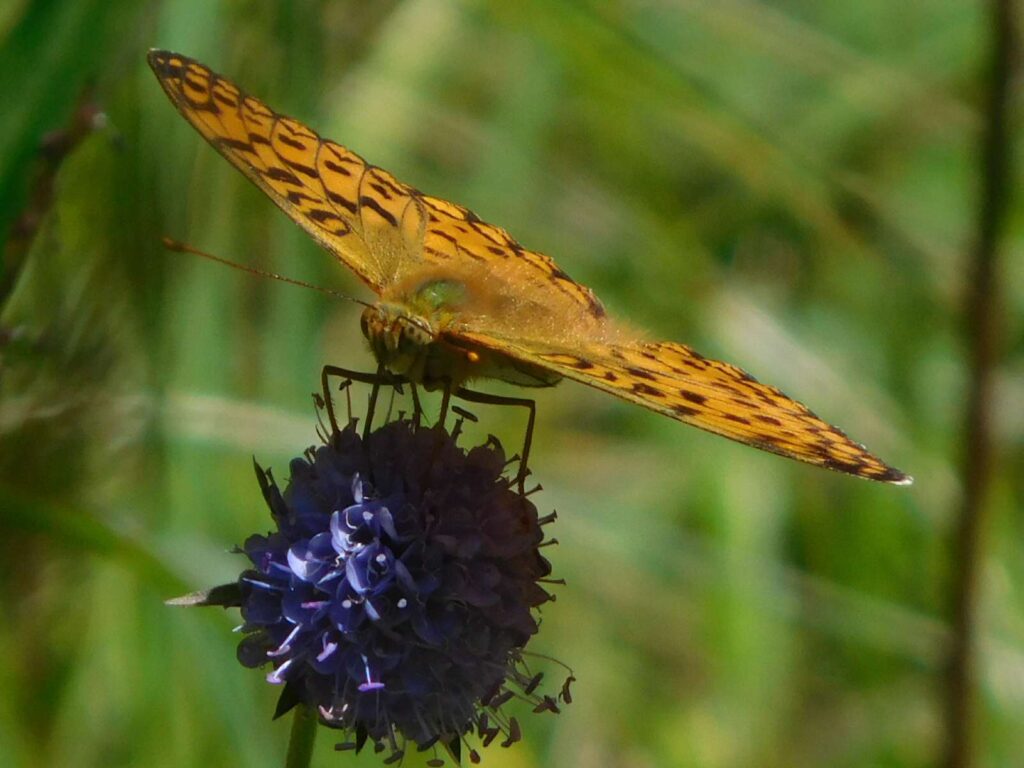
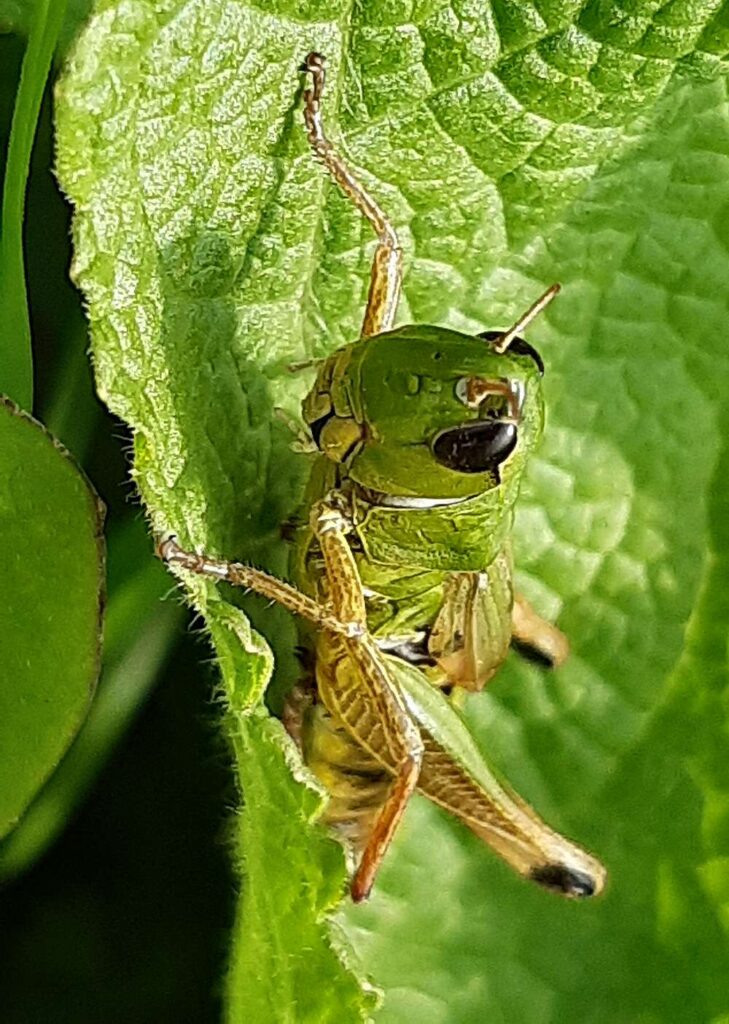
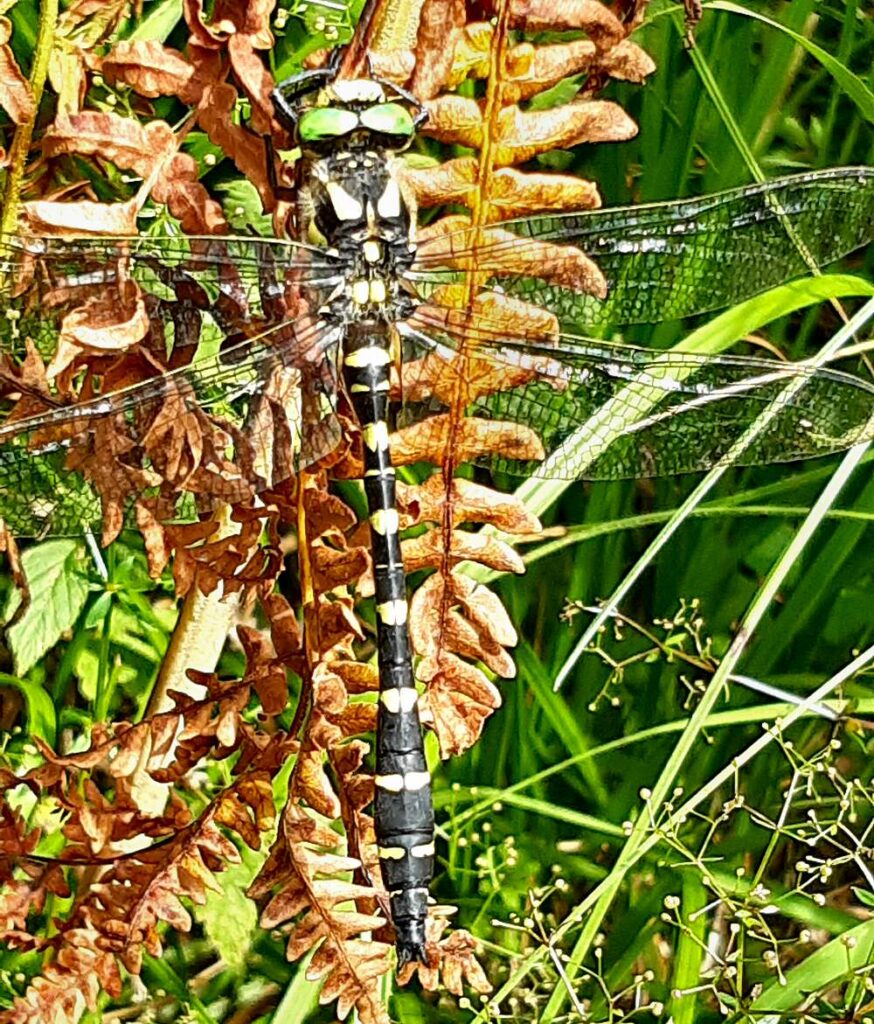
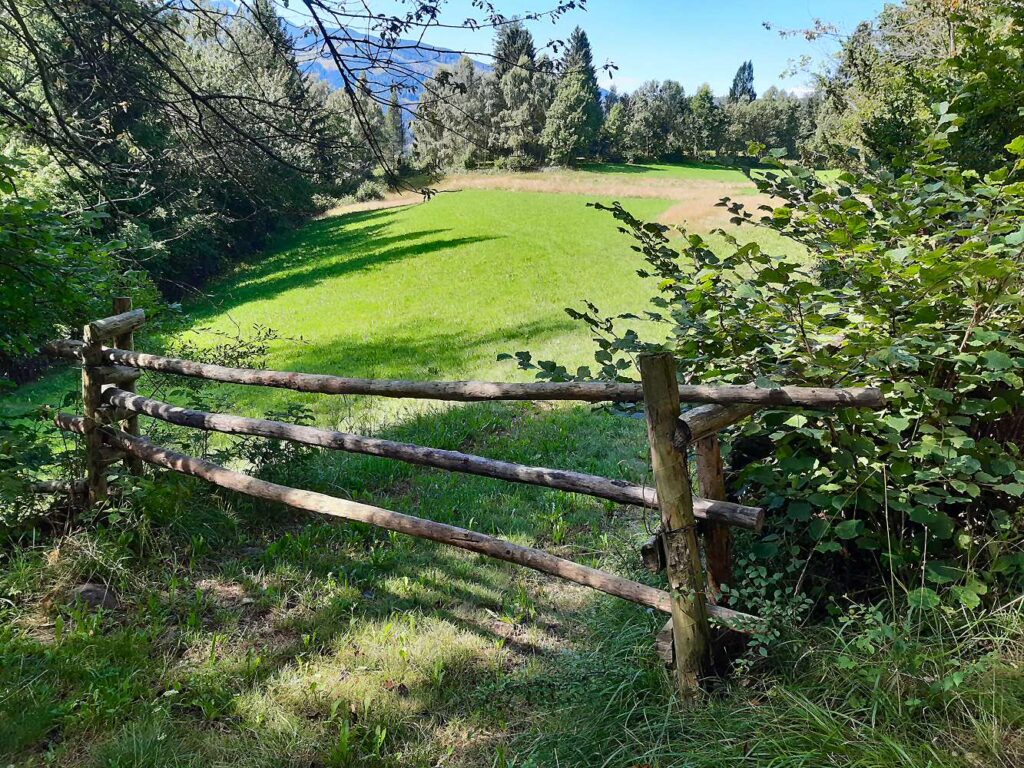
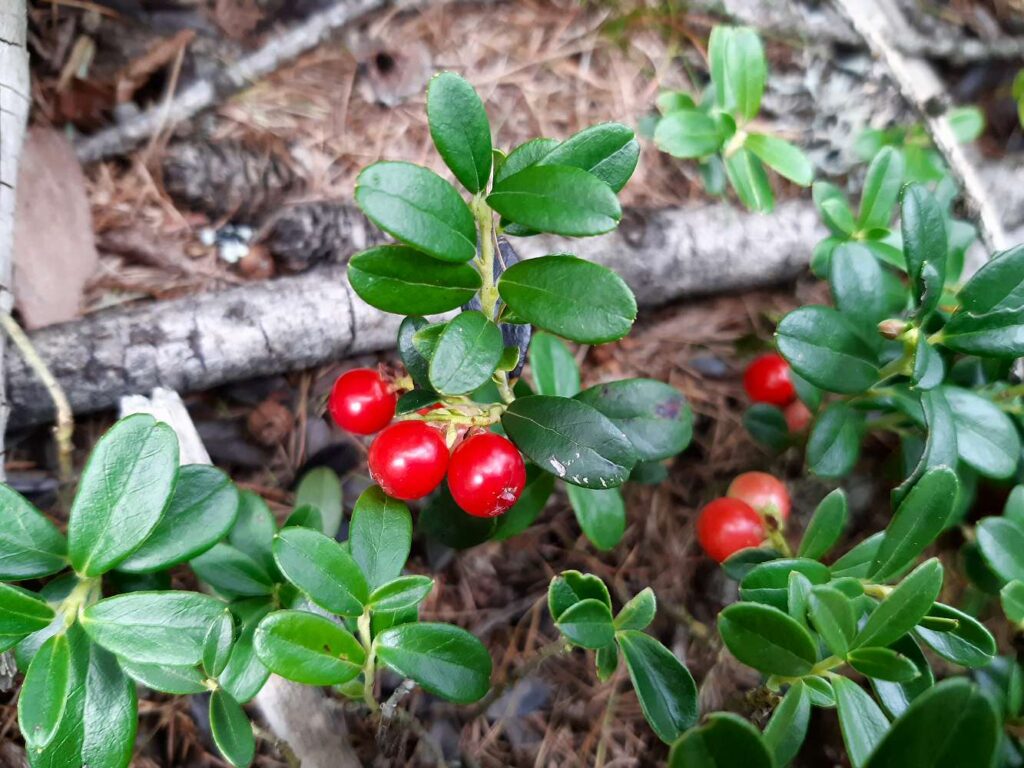
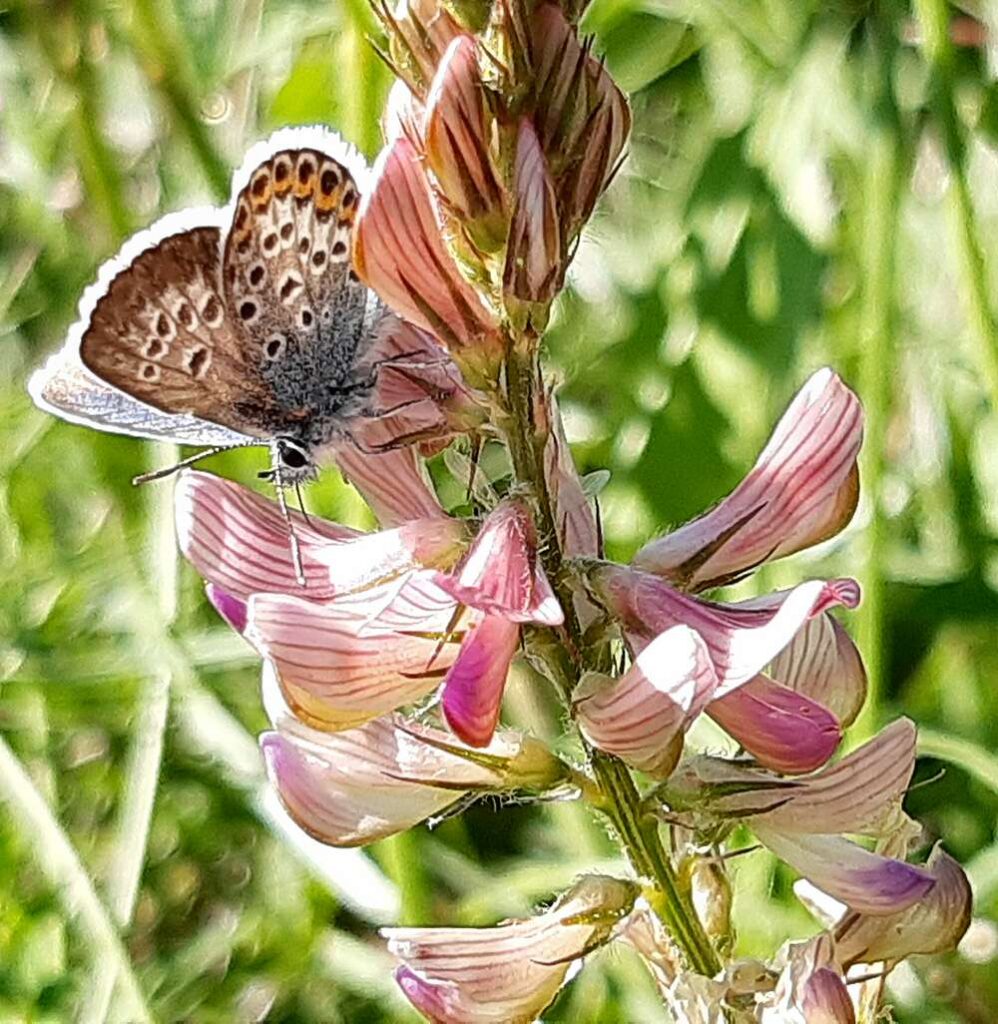
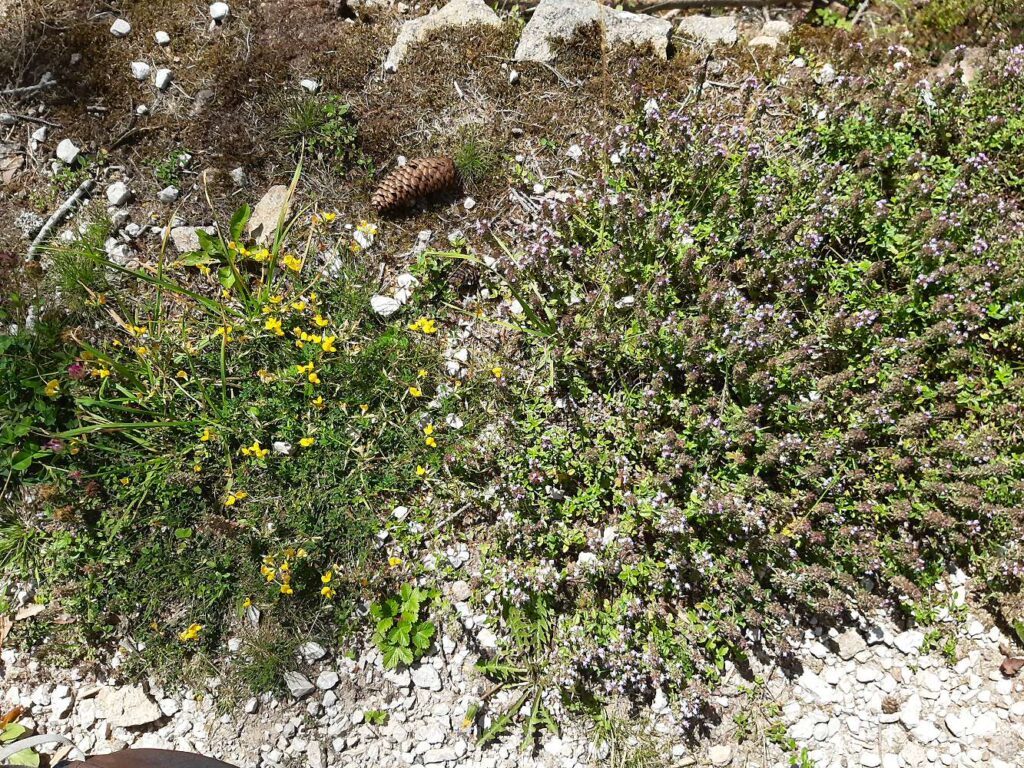
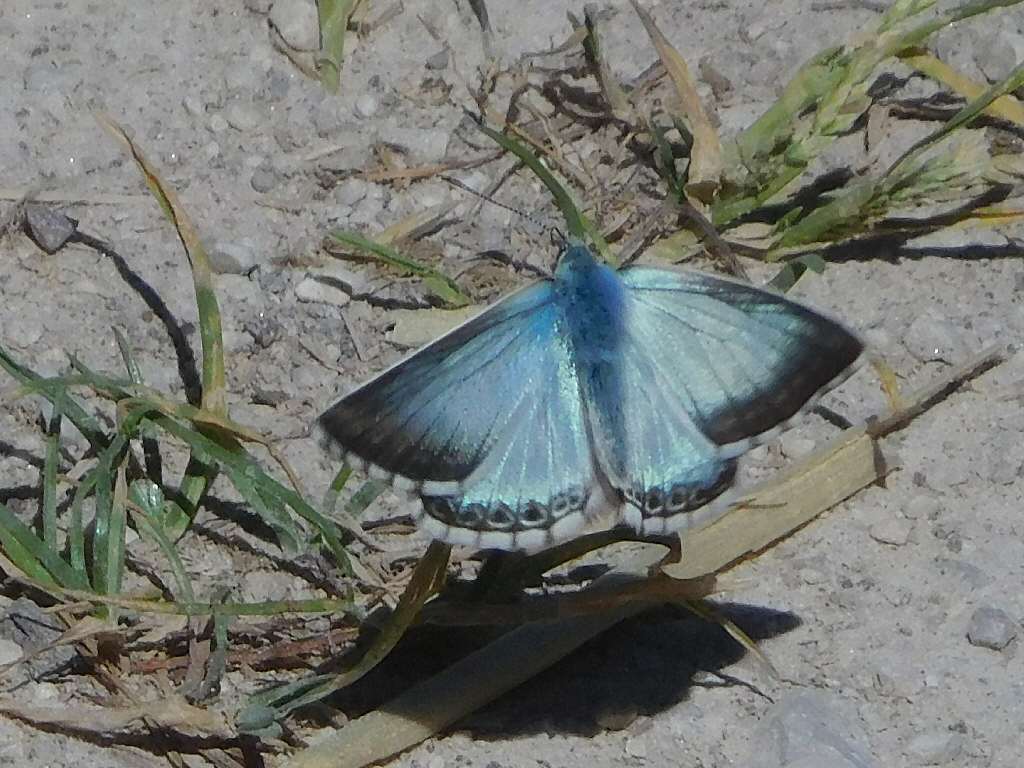
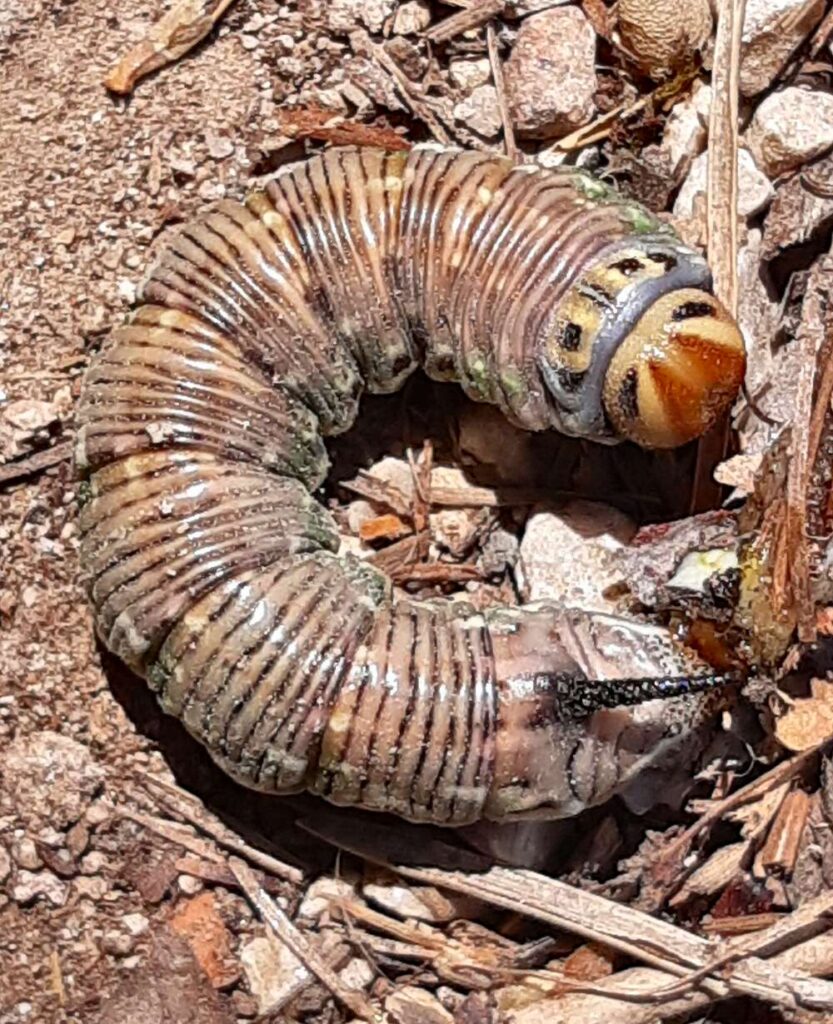
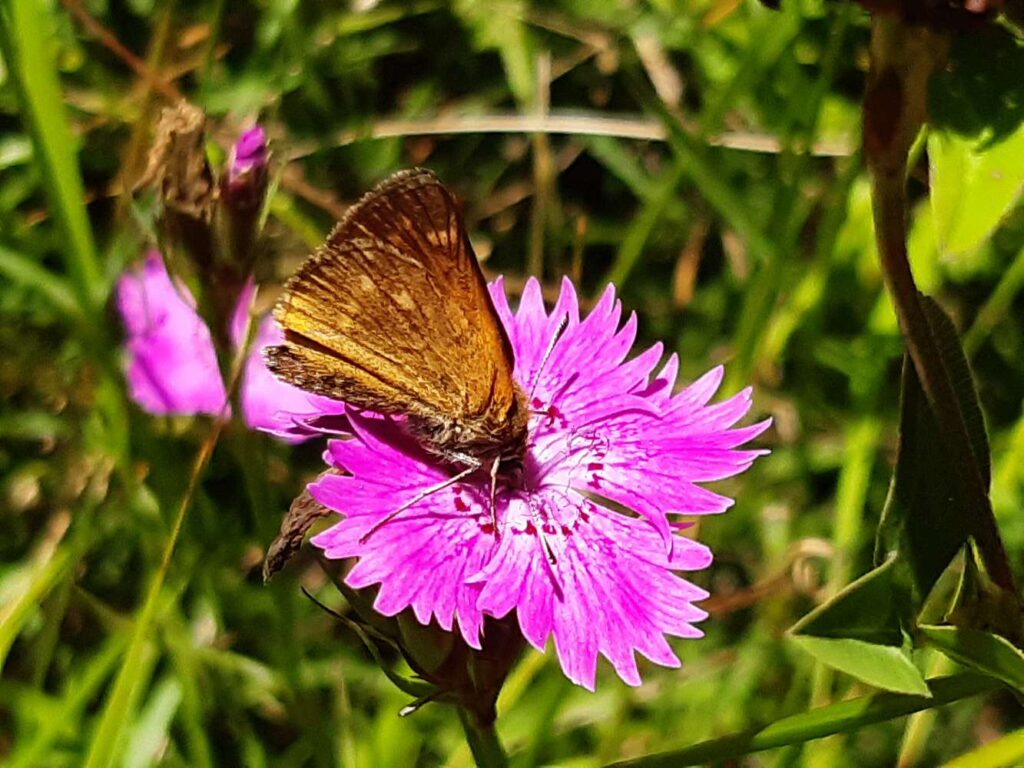
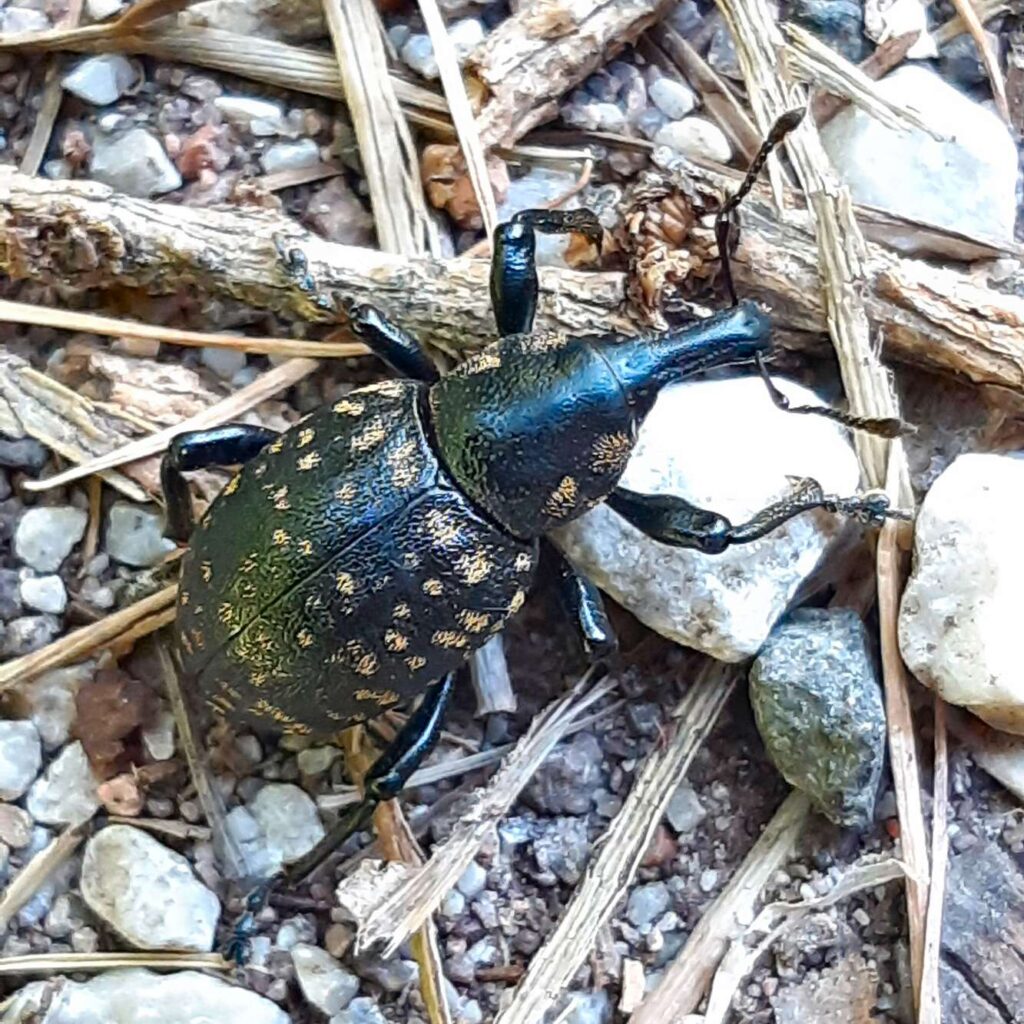
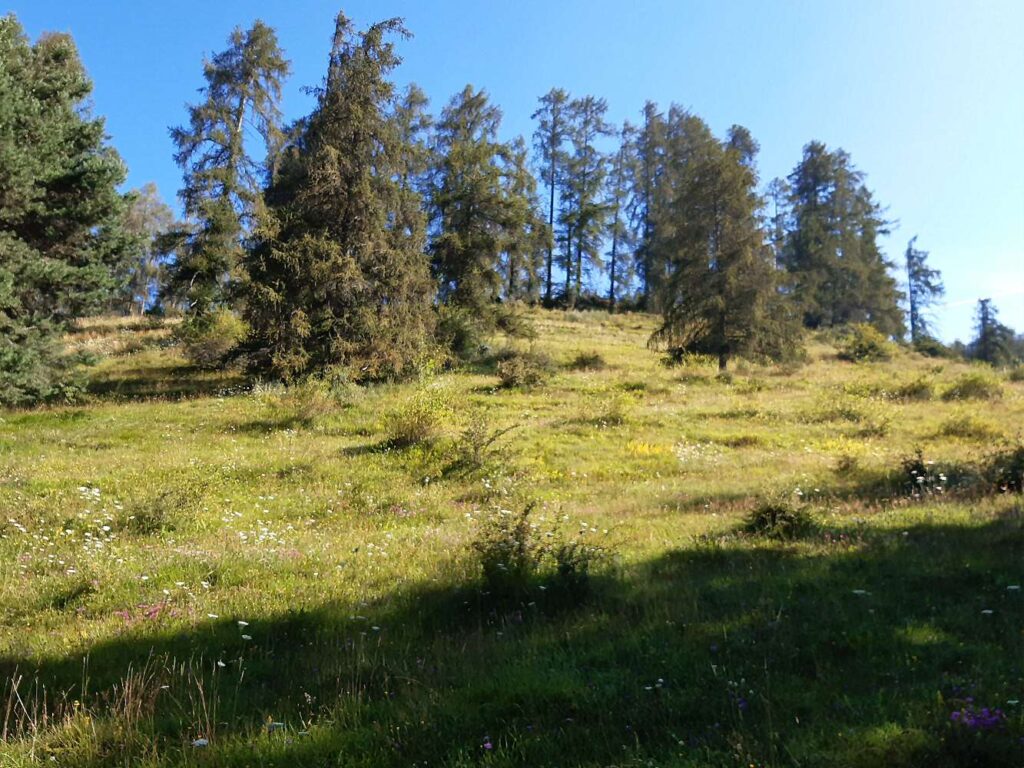
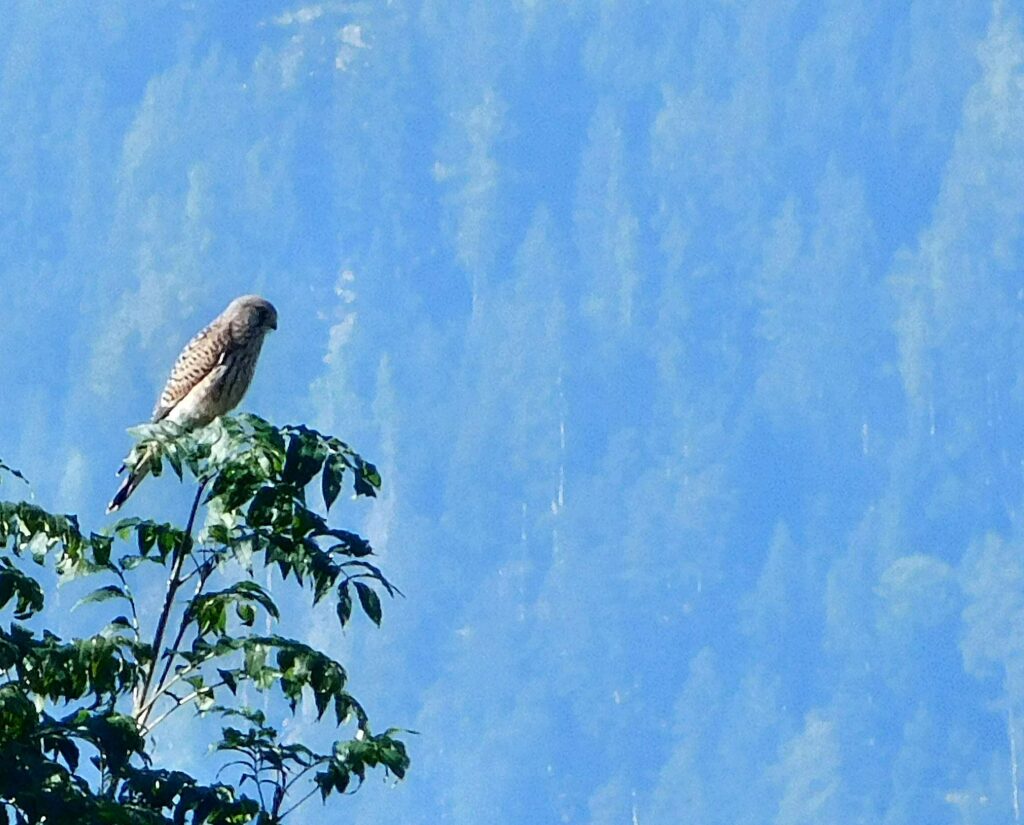

























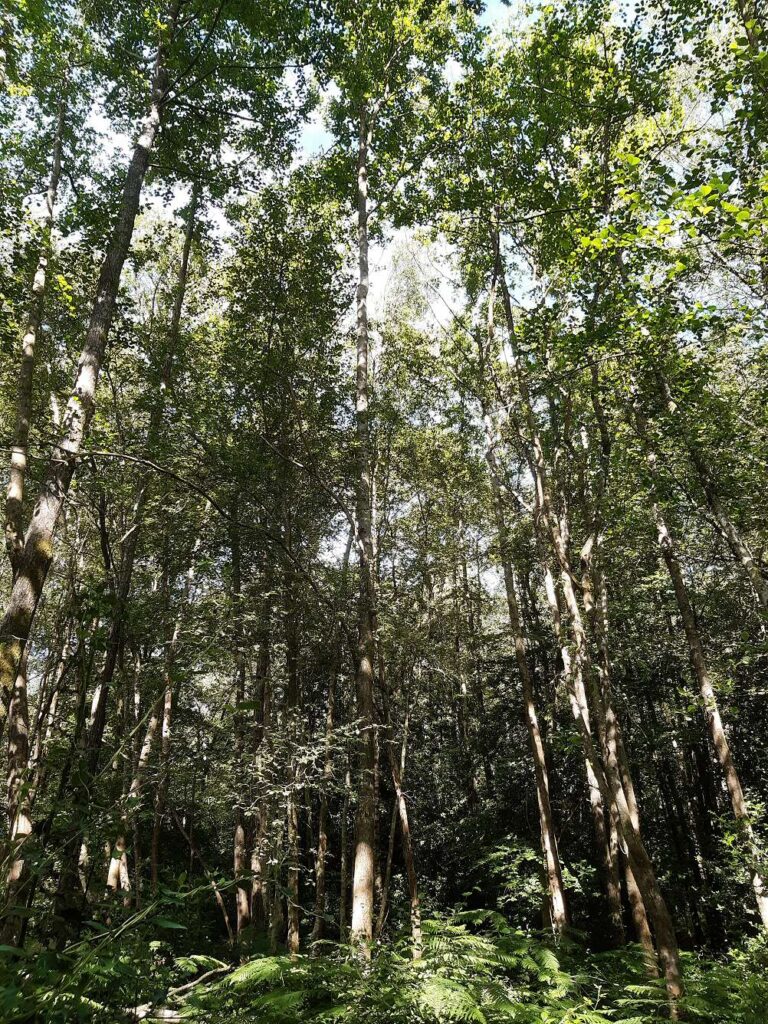
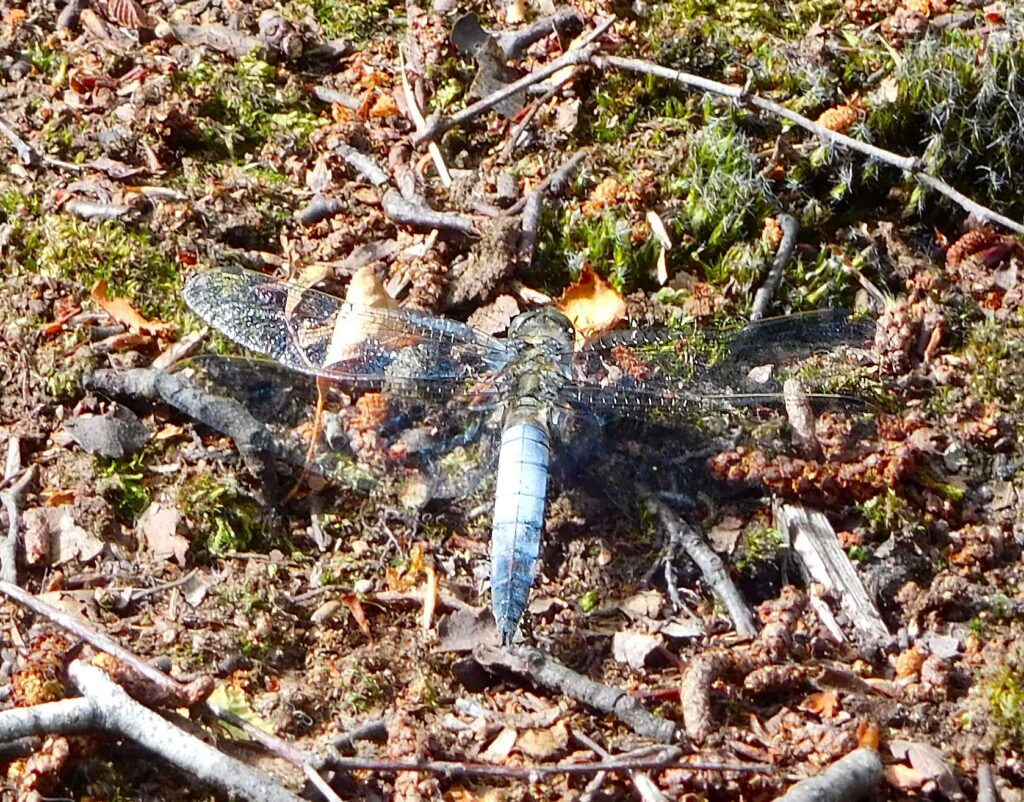
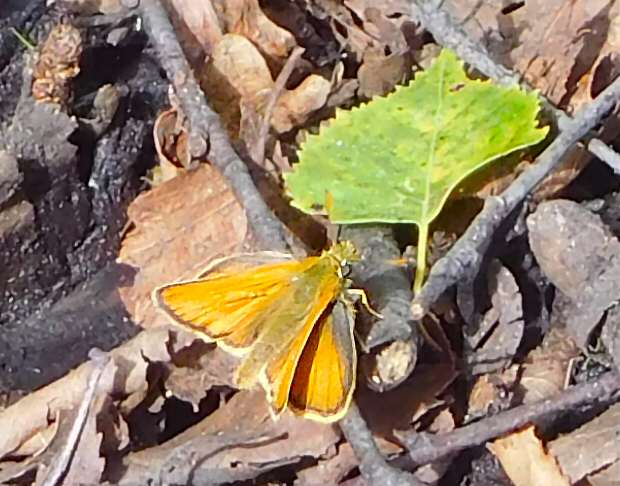
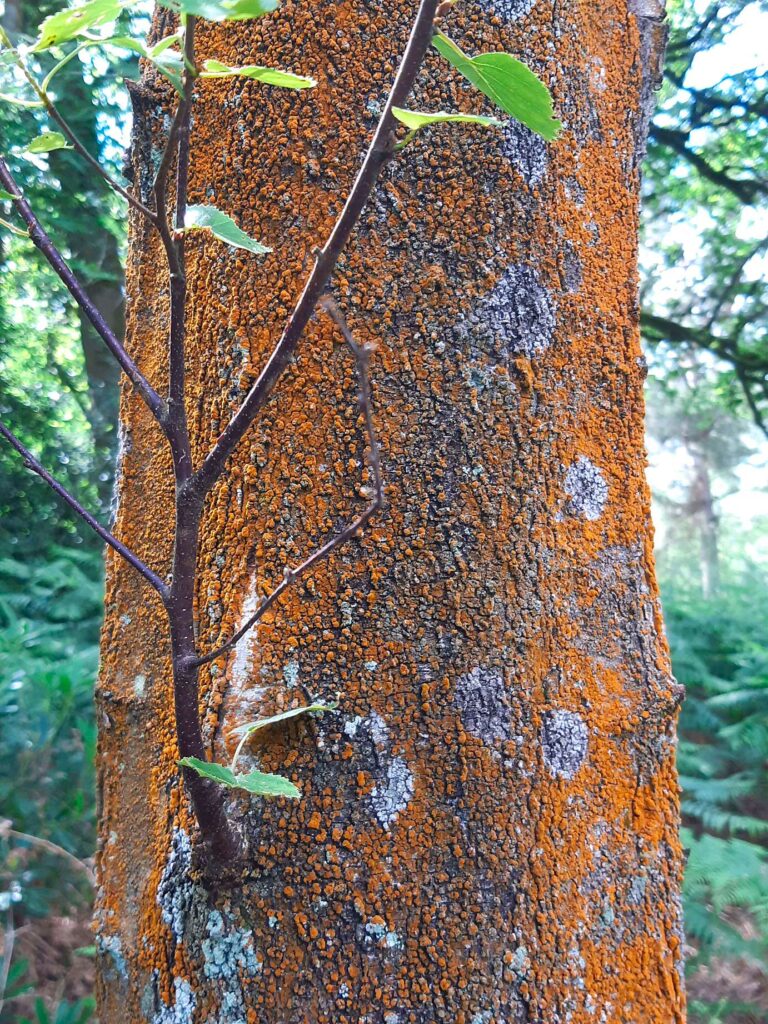
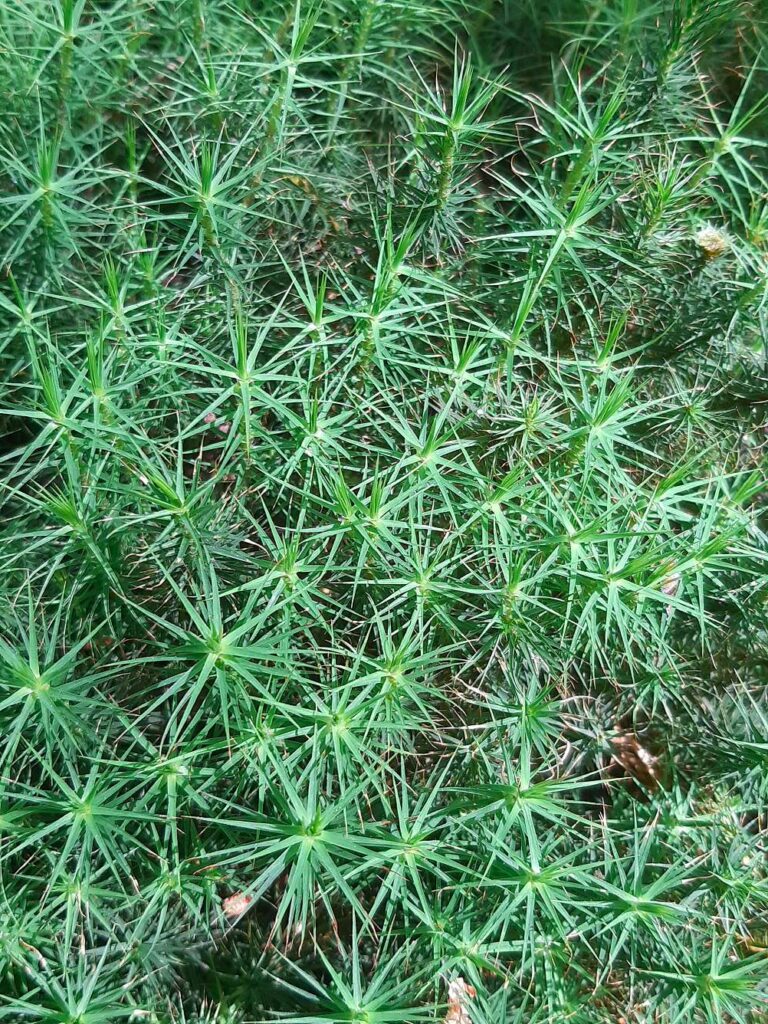
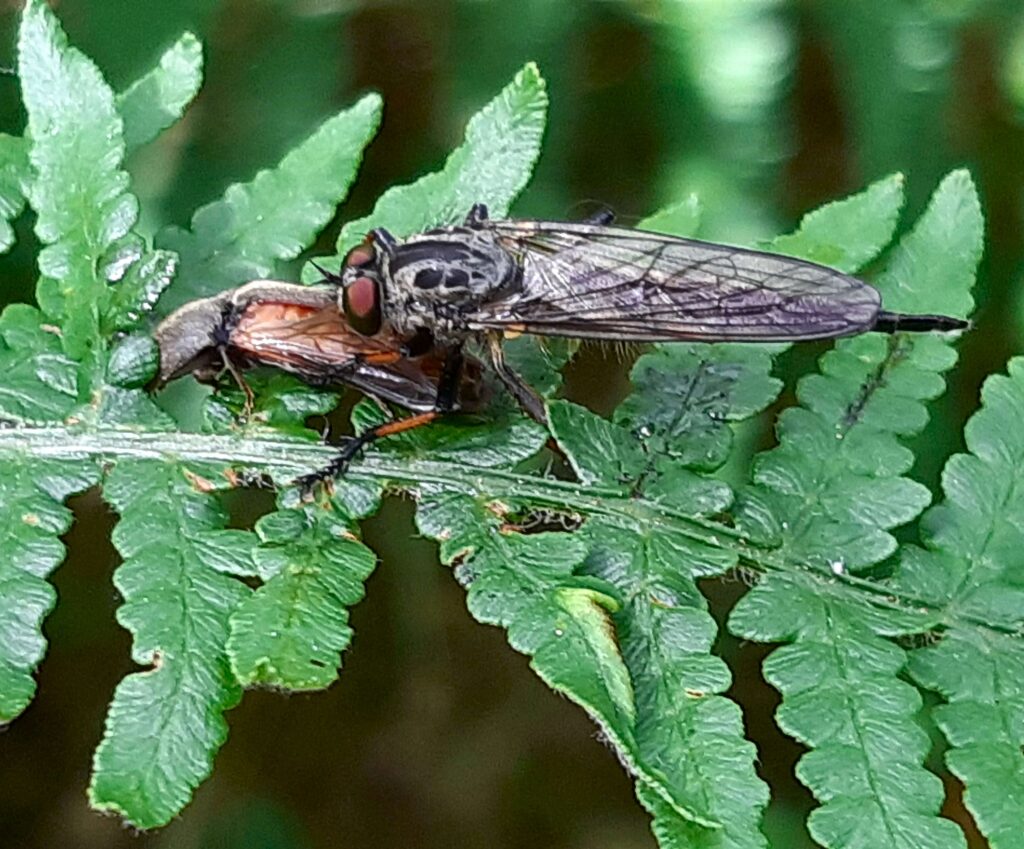
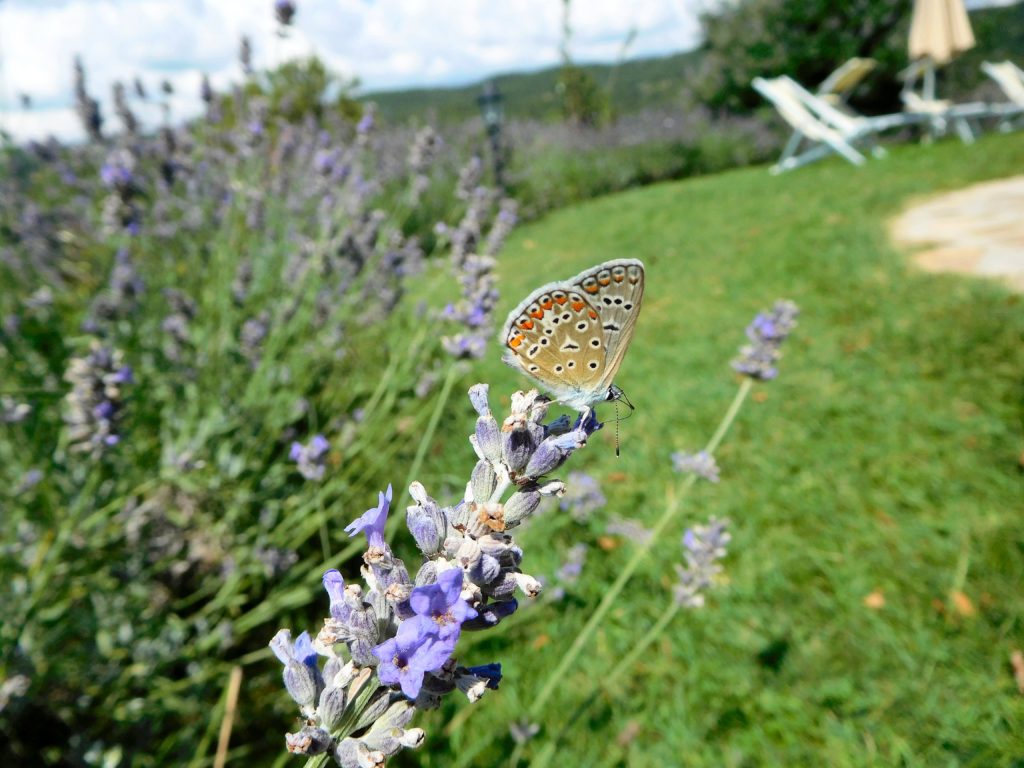
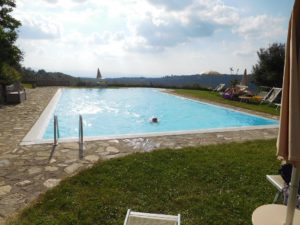
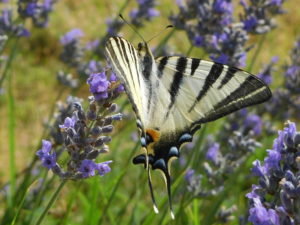
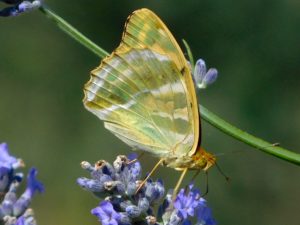
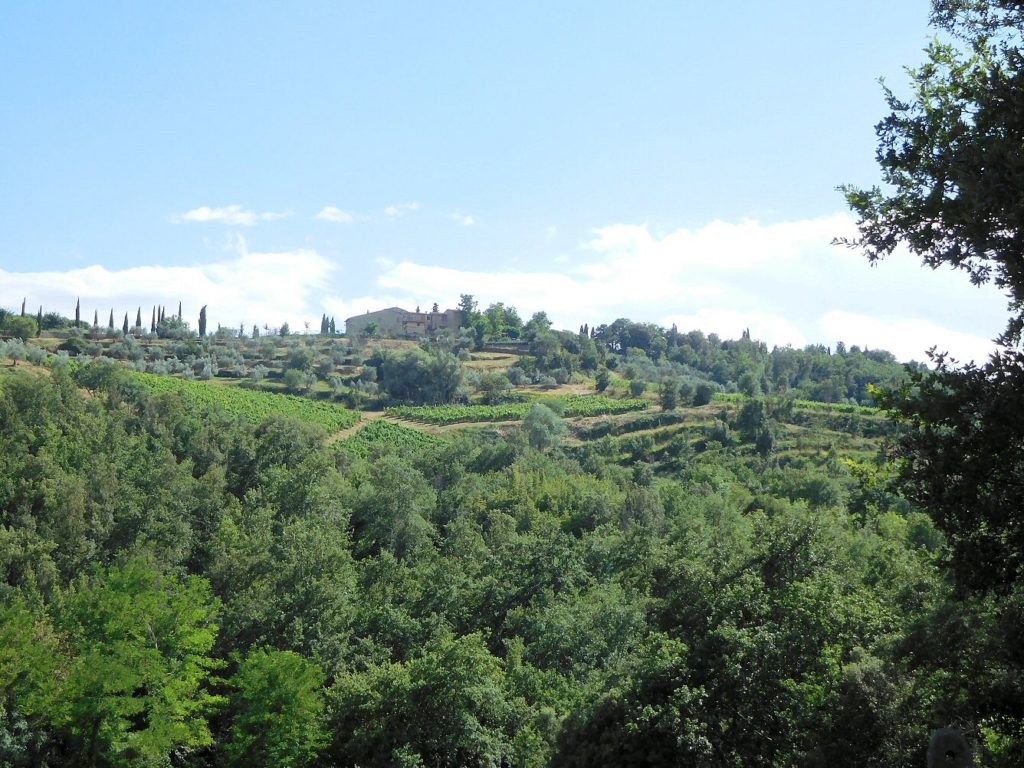
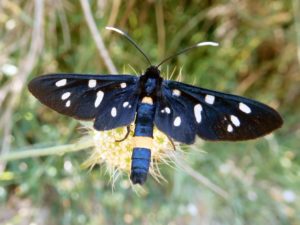
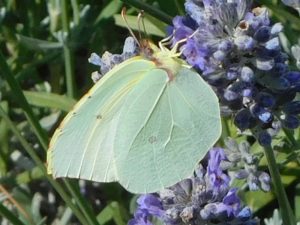
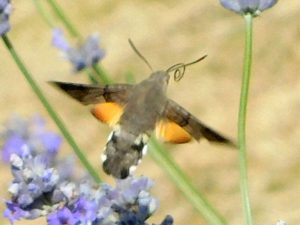
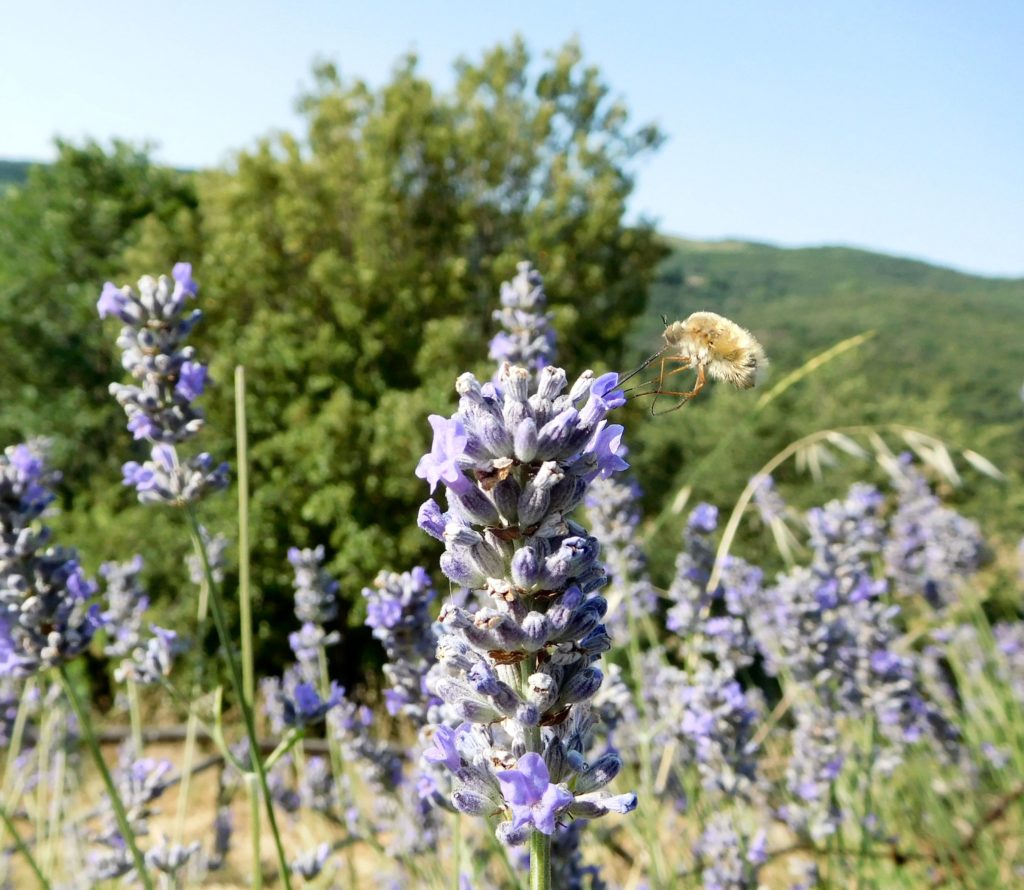
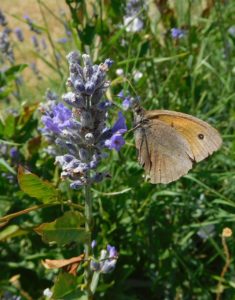
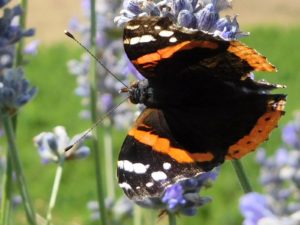
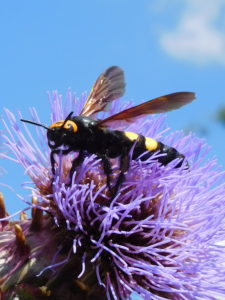
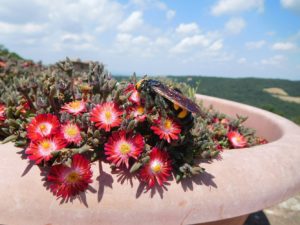
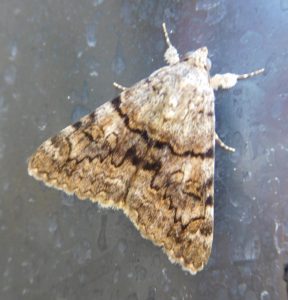
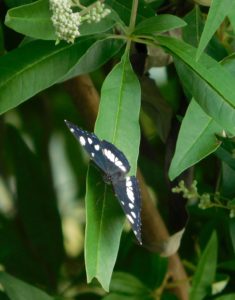
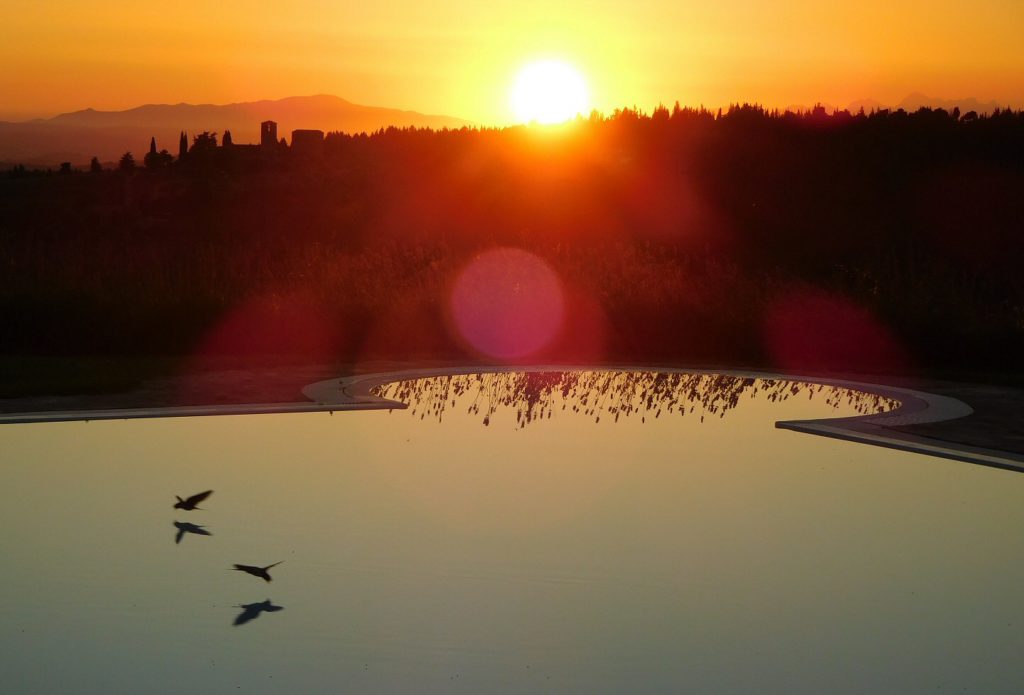
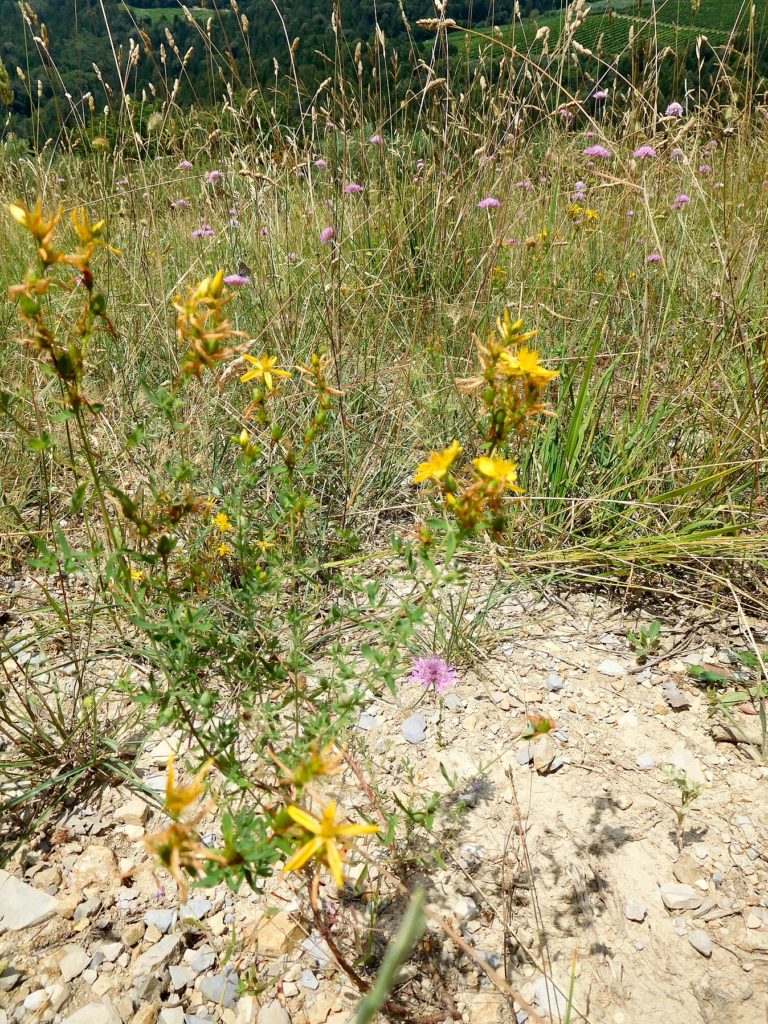
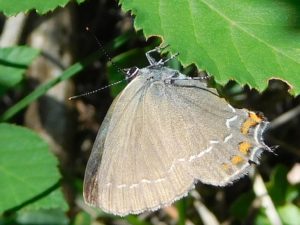
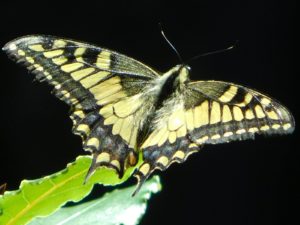
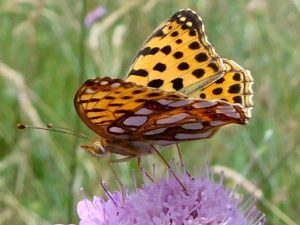
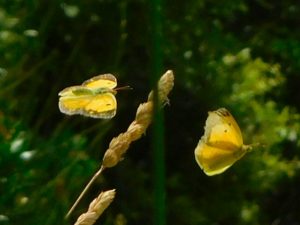
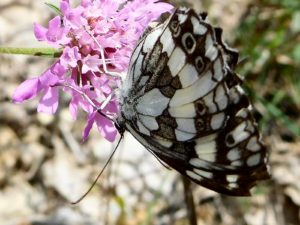
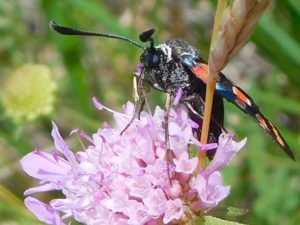
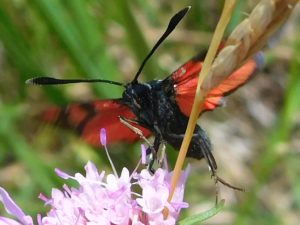
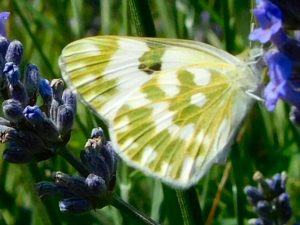
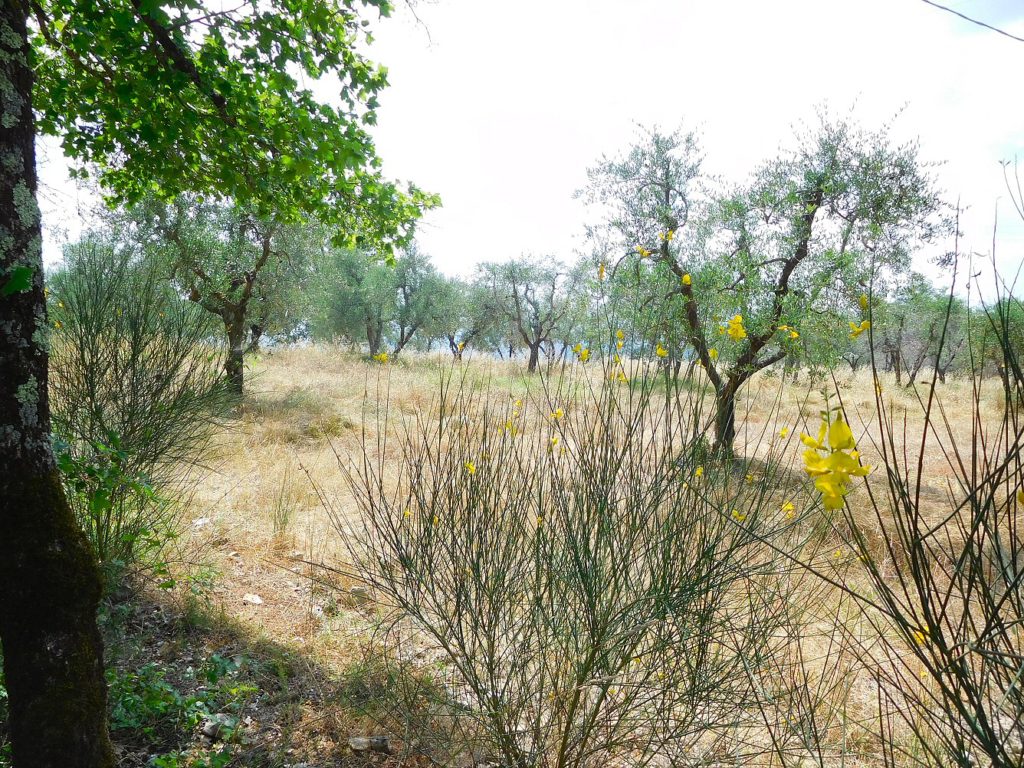
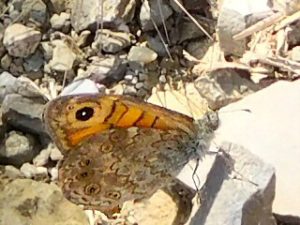
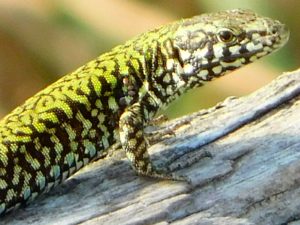
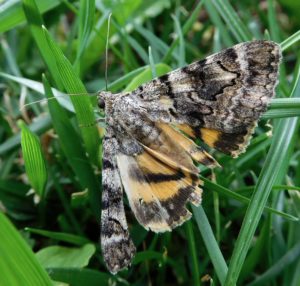
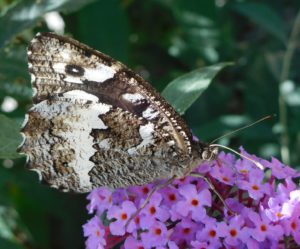
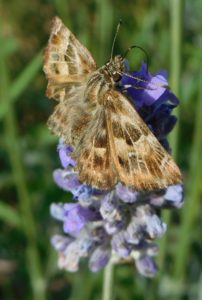
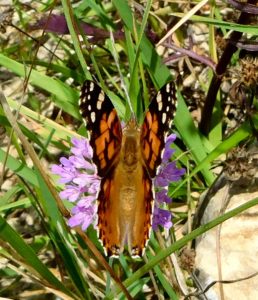
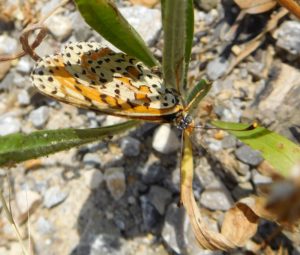
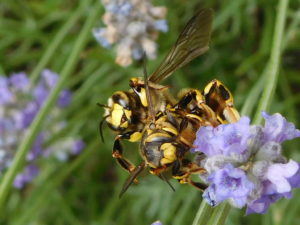
Although it was a bit late in the season for them, we saw half-a-dozen fireflies in the woods by the strada bianca (unmetalled road) and among the olive trees, half an hour or so after sunset.
I made no attempt to photograph birds, but a Hoopoe flew over the pool, and Turtle Doves cooed nearby. A Cuckoo called from far across the valley; a Song Thrush sang; a Green Woodpecker gave its laughing cry. White Wagtails flew up to the roof, and Italian Sparrows hopped about. Goldfinches twittered in the trees. A Sardinian Warbler raced for the cover of the trees, its black crown conspicuous; a Melodious Warbler sang from the woods. In the night, an owl called, it could have been a Scops Owl. And of course, Cicadas buzzed and Bush Crickets chirped all day long.
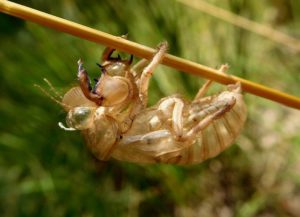
All photos © Ian Alexander 2018
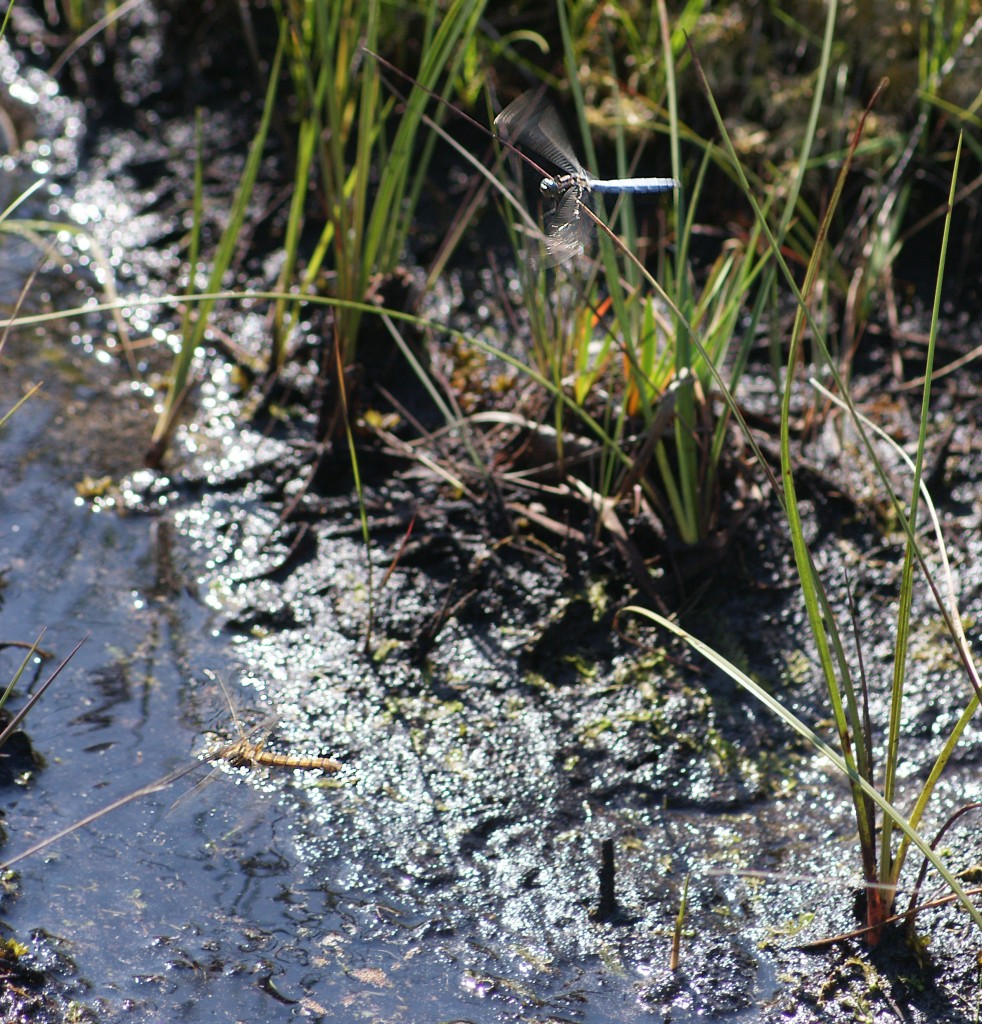
It was suddenly summer again this morning, so I packed cameras, binoculars and a sandwich and went down to Thursley in glittering sunshine. This photo perhaps catches something of the dazzle and sparkle of the bog pools and their shimmering guardians: a pair of Keeled Skimmers (Orthetrum coerulescens) are flying over the water; she is darting down to lay eggs, he is hovering above, guarding her from other males. Their wings sparkle and flash, and it is amazingly difficult to follow, frame, focus and shoot fast enough to get anything like a decent picture. But I rather like the motion blur in this one, and if it’s not perfectly in focus, you know why. I hope you like it too.
I was pleased, too, with this shot of an Emerald Damselfly, the sparkling water behind it forming a pattern of pleasantly out-of-focus circles.
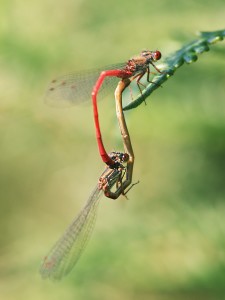
There were quite a few Small Red Damselflies about, mostly single but a few egg-laying pairs; and a modest number of blues, most likely Azures.
Apart from the hundreds of Keeled Skimmers, other dragonflies included Common Darter, Black Darter (I only saw a few females today), Black-Tailed Skimmer (just one), and Southern Hawker.
We saw few butterflies apart from Large Skippers which bustled about flowers near the boardwalk, and little Gatekeepers (I do mean they were smaller than usual) … until we arrived on the amazing Parish Meadow that was once a dump for emptying cesspits. Now it has an ecology strikingly unlike the rest of Thursley Common.
The meadow was full of Meadow Browns, Graylings (mating), Ringlets, Essex Skippers, a Brimstone, Large and Small Whites, and … a Purple Hairstreak (about the Oak trees). The rabbit-bitten pasture, dotted with little flower-stalks of Centaury, was thick with Ragwort, which in turn was richly covered with Cantharid beetles, solitary bees, wasps, and hoverflies and other Diptera. We put up a Silver Y moth which obligingly landed in front of us and perched in the open. We found the traces of a Green Woodpecker killed by a Sparrowhawk; but happily saw a live one in the Oaks nearby.
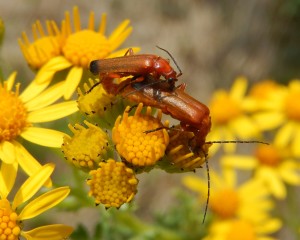
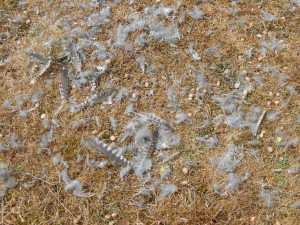
The boardwalks were busy with Lizards and Skimmers sunning themselves.
We met a local group of birders, complete with masses of tripods, telescopes and cameras, and asked if they were looking at the Stonechats. No, they replied, the Hobbies, there are three. We looked up, and sure enough there were three raptors. But in our binoculars, they turned out to be a Kestrel, a Hobby, and a Red Kite! Perhaps there were some more Hobbies somewhere else.
A little way further, absent the birders, we found a dead tree with some juvenile birds perched about it, and a lot of twittering. Yeah, a typical Chiswick Cafe. Some of them were young Redstarts; the others, young Stonechats: pretty confusing. But the Redstarts flew up into a Pine tree – not a Stonechatty thing to do – and sure enough, there was an adult Redstart on a lower branch, plain to see. And a Stonechat adult rasped out its grating call over to the right.
In a group of tall Oaks, we sat and ate a sandwich; and a Spotted Flycatcher flew across and perched on a high dead branch. It spent five minutes looking about, twisting its neck remarkably, but making no sallies. When I was a boy I saw them in the garden every summer; now they’re really something special, like, er, Starlings and House Sparrows.
The sandy heath paths were full of little holes dug by Ammophila Sand-Wasps, and others made by Philanthus Bee-Wolves (or Bee-Killer Wasps). Both are called digger wasps (“Sphecidae”) in most books, and it’s certainly a good name, but the family has been split up, so Philanthus is now in the Crabronidae, which contains most of the old “Sphecidae” (we’ll have to say sensu lato for this); the new Sphecidae (sensu stricto) only contains what used to be the Sphecinae, which includes Ammophila. Rich scope for confusion. Sphex is the ancient Greek word for wasp, and it’s interesting that Linnaeus chose this word for a digger wasp rather than the social wasps, which have the Latin name Vespa for the hornet, and Vespula, little wasp, for common wasps.
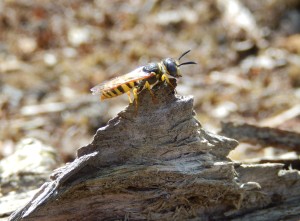
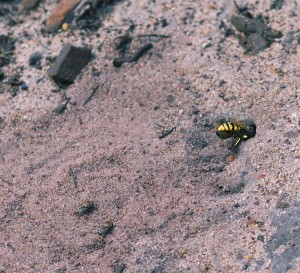
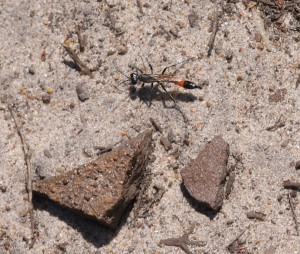
Out of a low bush of willow and gorse right beside a boardwalk came a strange, quiet but insistent squawky chatter of alarm. Peering in between the branches, a small slim dark bird with a long dark tail could be seen hopping about anxiously: a Dartford Warbler. It was extraordinary to be within a few feet of this shy, rare and retiring bird, and watching it for several minutes. There are actually quite a few on the heaths of Surrey and the south coast, but they’re never easy to see—most of my views have been of disappearing rear ends, diving into gorse bushes.
Down at the reserve today, the first Skipper of the year, basking on a reed by the pond (with Azure and Large Red Damselflies too). It must be a Large Skipper from its size and pattern: uncommon in the reserve.
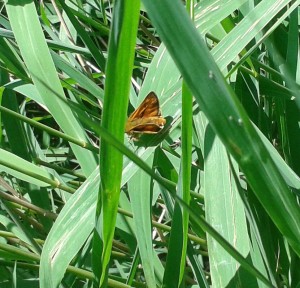
Up on the ramp, a Red Admiral; and this Ichneumon wasp, which looks very much like Gasteruption jaculator, a fine parasitoid with an ovipositor as long as her head, thorax and abdomen together. She was inside the hut trying to escape through the window; she is black all over, except for the front of her abdomen which is red, and the tip of her ovipositor, which is white. Her wings are nearly transparent with a hint of brown.

We spent the morning fixing path edgings – poles of elm, with handmade wooden pegs, sharpened to stakes. A foreign couple came along and asked if we were preparing for Vampires: perhaps they were from Transylvania, who knows.
In the afternoon we repaired the gaps in the fence where vandals have started jumping over and running down the bank. We hammered in an enormous metpost with a tall square oak post – we had to bring the stepladder to reach the top to drive it in with the round post-hammer – and we had to shave off the edges so the hammer fitted over the post! Then we twisted wire supports and barbed wire to repair the gaps, and hammered extra-large staples into the posts to fix the wire. It was hot and hard work but we’ve fixed a definite problem. Happily the rest of the fence has become totally overgrown with brambles and bindweed, with leafy branches reaching down to it, so it seems unlikely anyone will climb over it there.
In the moonlight, two Nightjars churr vigorously, competitively, their odd sewing-machine song continuing for minutes at a time, ending with a few chucks and wing-claps.
In the morning, a Golden Oriole squawks and mews strangely from the woods.
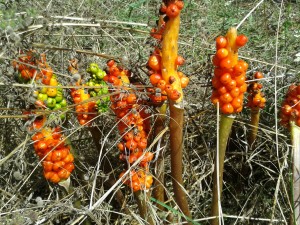
Amanita mairei is an unusual Amanitopsis (Grisette) section toadstool in the mainly poisonous Amanita genus. This one is found in mixed open woodland on sandy soil, exactly the case here, and a beautiful example of just how specialized our fungi are. How do 3,500 species of mushroom and toadstool share a continent? By specializing in different habitats, living with different plants. The volva, here partly eaten by slugs, is a whitish bag at the base, often buried in the soil. The stem is slightly fleecy, the cap convex and without an umbo, the little point often found in the middle.
Under the hot sun, I plant some more lavender, and some ornamental Sage (Salvia superba) plants. They are soon visited by Large Skippers, bumblebees, a Hummingbird Hawkmoth.
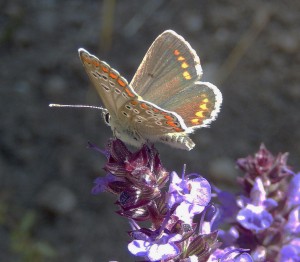
On the way home down a quiet country lane, we stopped the car for a Hoopoe. It wandered unconcernedly along the road for some minutes, eventually flapping away with its distinctive ‘butterfly’ flight to a telegraph wire. A Kestrel landed on the same telegraph wire nearby, then hovered over some long grass.
At 7pm, a very large Violet Ground Beetle, Carabus violaceus, about 30mm long, splendidly iridescent with a blue-black gloss, clambered up the wall of the house.
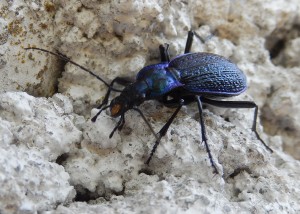
A Blackcap treated us to late-season bursts of musical song, brief but fluty. A Great Green Bush-Cricket fluttered a foot over the lawn, legs trailing like a wading bird’s, its four wings beating hard to keep its long body airborne. And a Wall Butterfly visited what I’ll have to call the Butterfly Flowerbed with its mix of flowering lavenders and thyme.

Thursley Common on a sunny July day can shimmer with the wings of dragonflies. Today, hundreds of Keeled Skimmers, joined by plenty of other species large and small – from the mighty Emperor to the dainty Small Red Damsel, made the air seem to sparkle as brightly as the water beside the boardwalk. There were Keeled Skimmers perched alertly on stalks, ready to spring into the air at an instant’s notice; Keeled Skimmers in tussling pairs, their wings rustling and scuffling as they clashed in brief, brutal territorial disputes; Keeled Skimmers in groups of four or five, dashing and swerving over the water; Keeled Skimmers over every pond, bog pool, and lakeside.
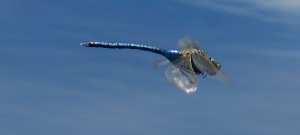
Over one quieter pool, an Emperor Dragonfly patrolled in more stately fashion, almost hovering, drifting forward slowly as if a helicopter pilot was holding the machine’s collective drive stick just a little forward of the hover position, its striped blue tail gleaming in the sun.
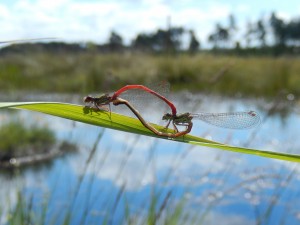
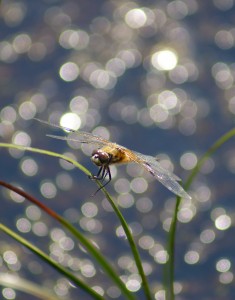
Many of the Odonata were busy laying eggs, from the Skimmers to the damselflies. One or two Black Darters were about: they can be here in large numbers later in the season.

On the sandy heath, the Sand-Wasp Ammophila sought her insect prey, her distinctive shape almost dragonfly-like with an extremely elongated red waist leading to a plump ‘tail’ to her abdomen.
Overhead, a Hobby dashed and stooped, handsome through binoculars, moustachioed, spotted below, its long scything wings like a giant Swift easily outpacing the fastest dragonfly. Below, a lizard rested unobtrusively at the edge of the boardwalk, ready to scuttle into the heather at any threat; another a yard further on. A Reed Bunting rasped out its short scratchy song, skreek, skreek, skrizzick. A Curlew called once; a Skylark soared invisibly high into the blue, singing as if John Keats were at hand to report on the beauty of its song.
